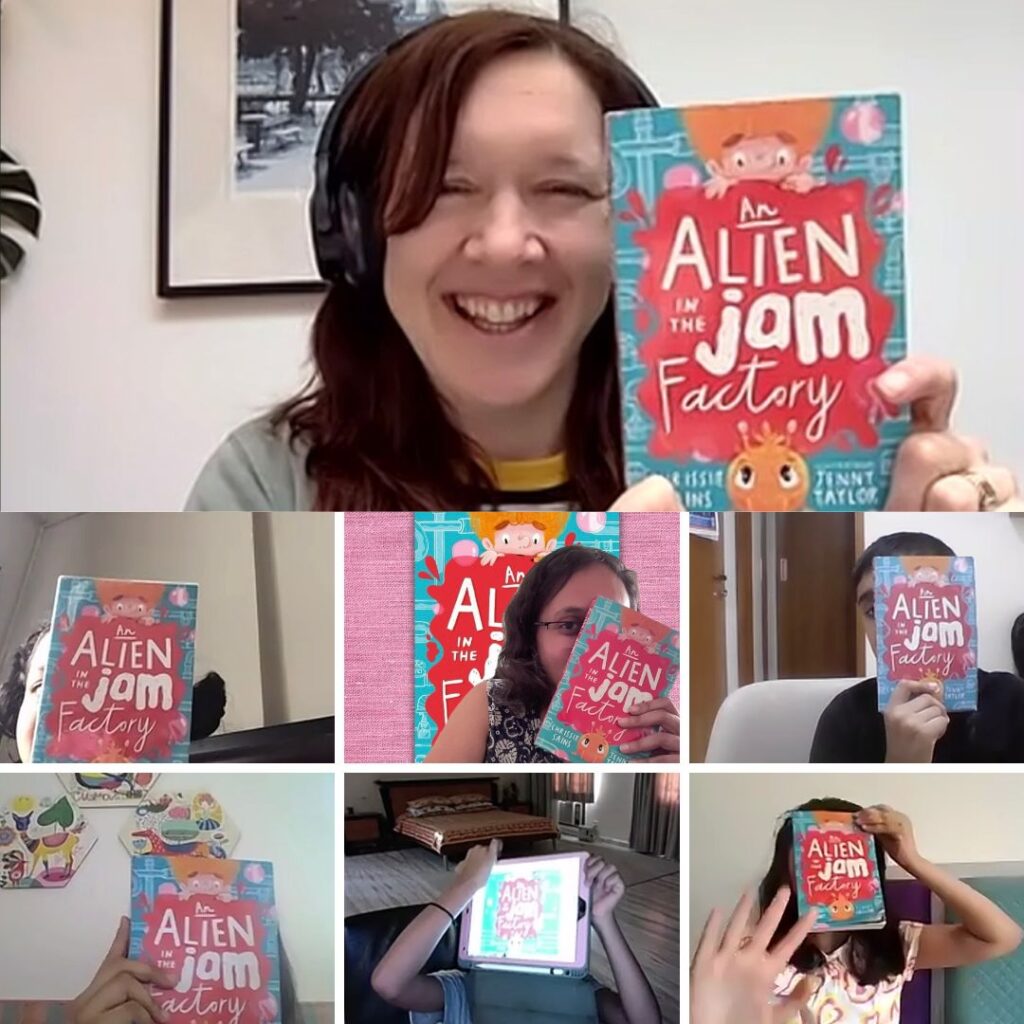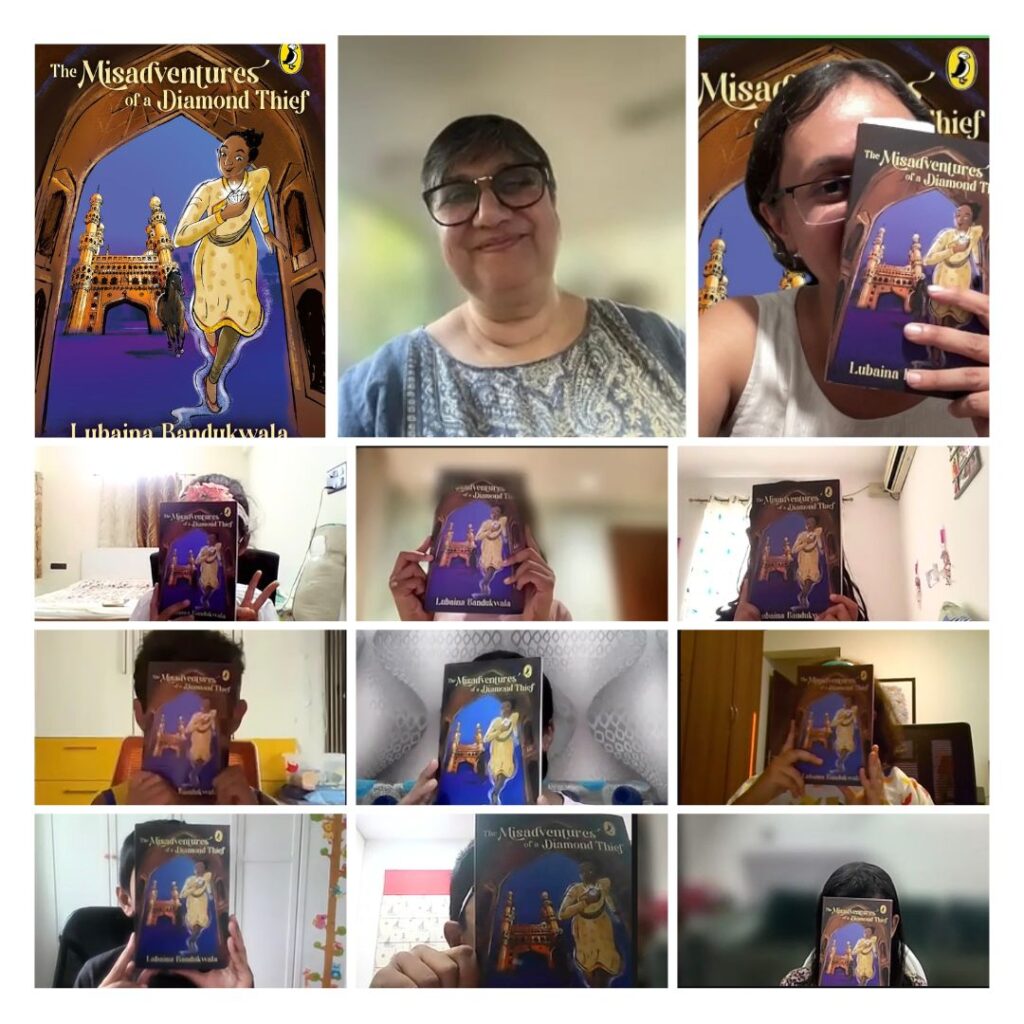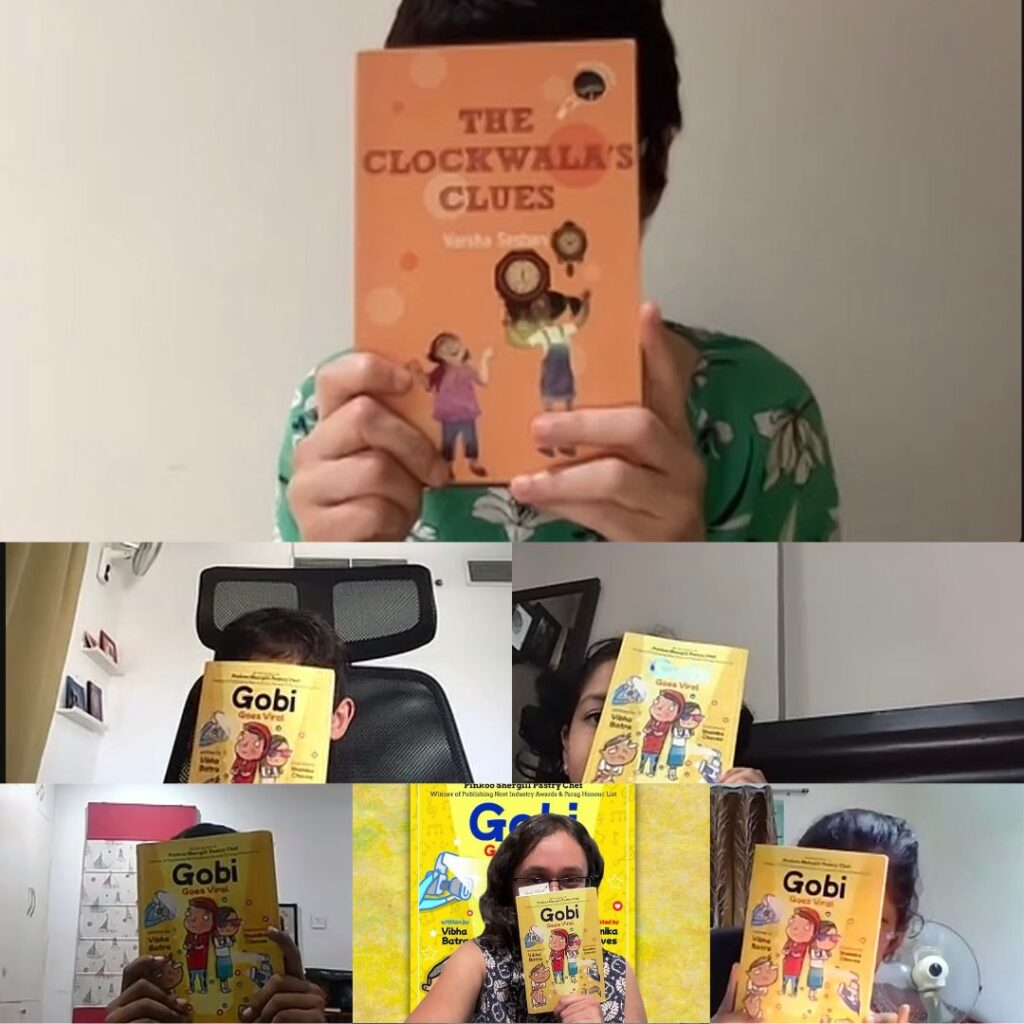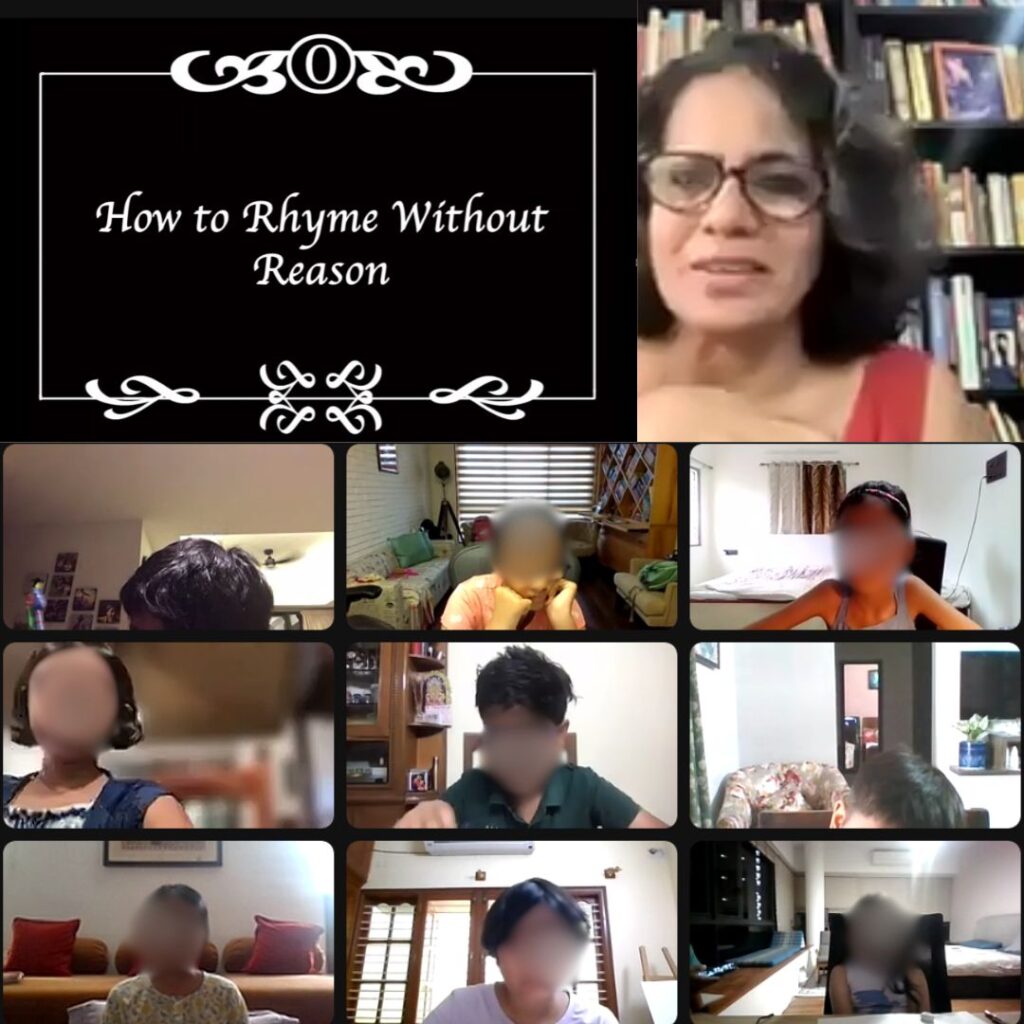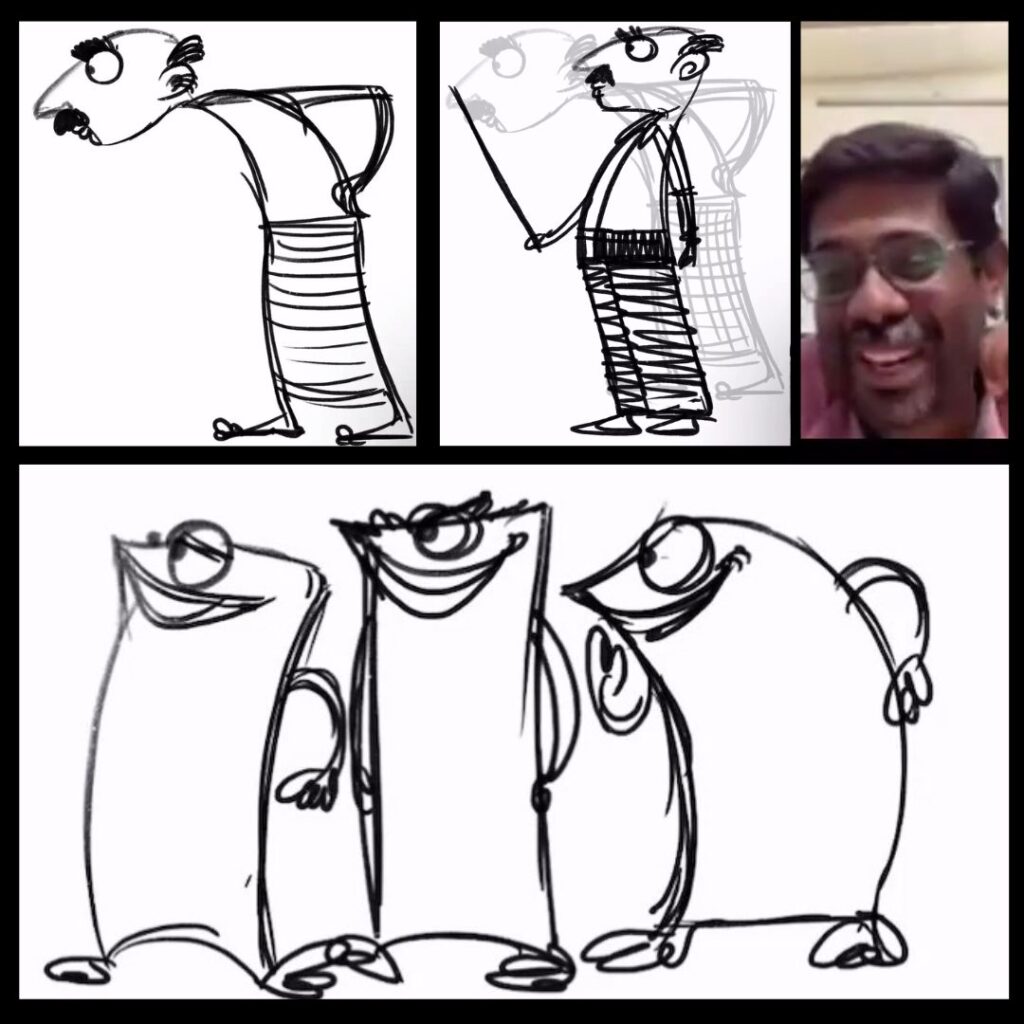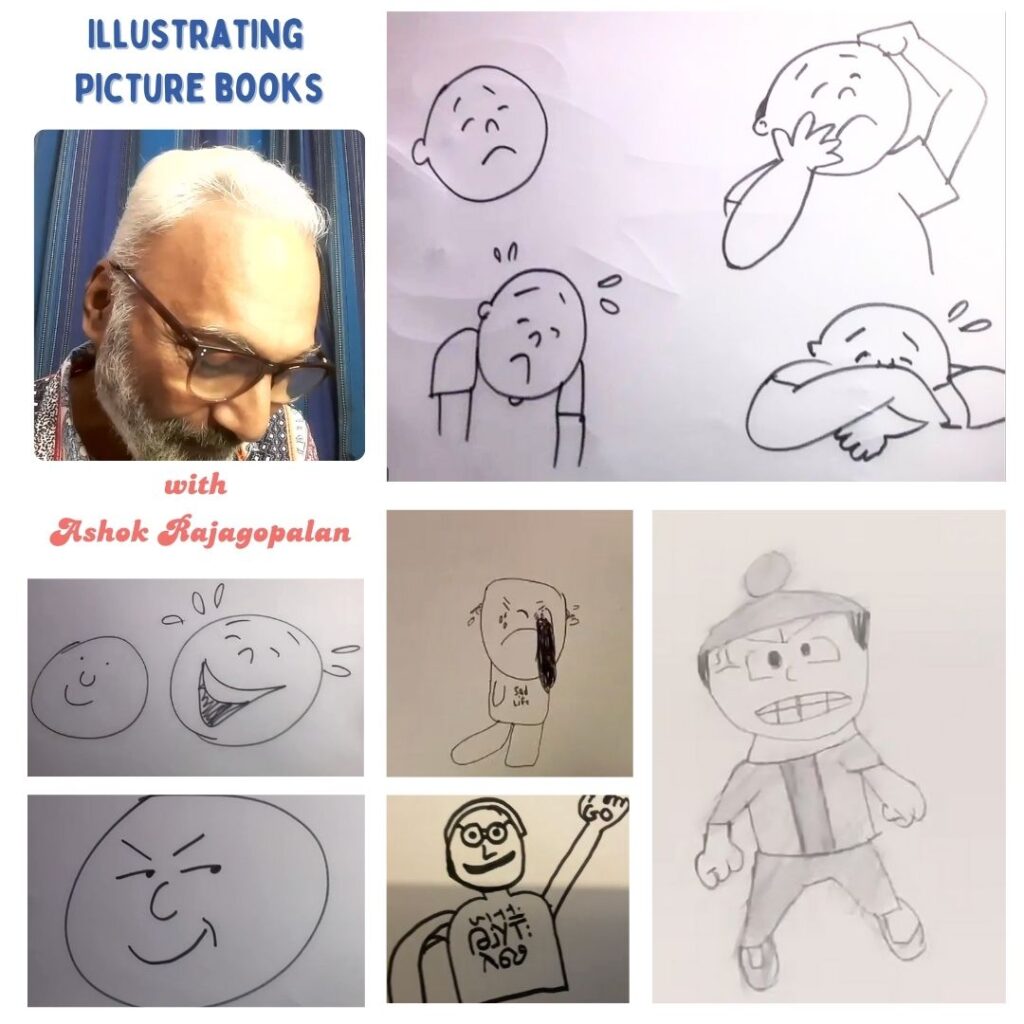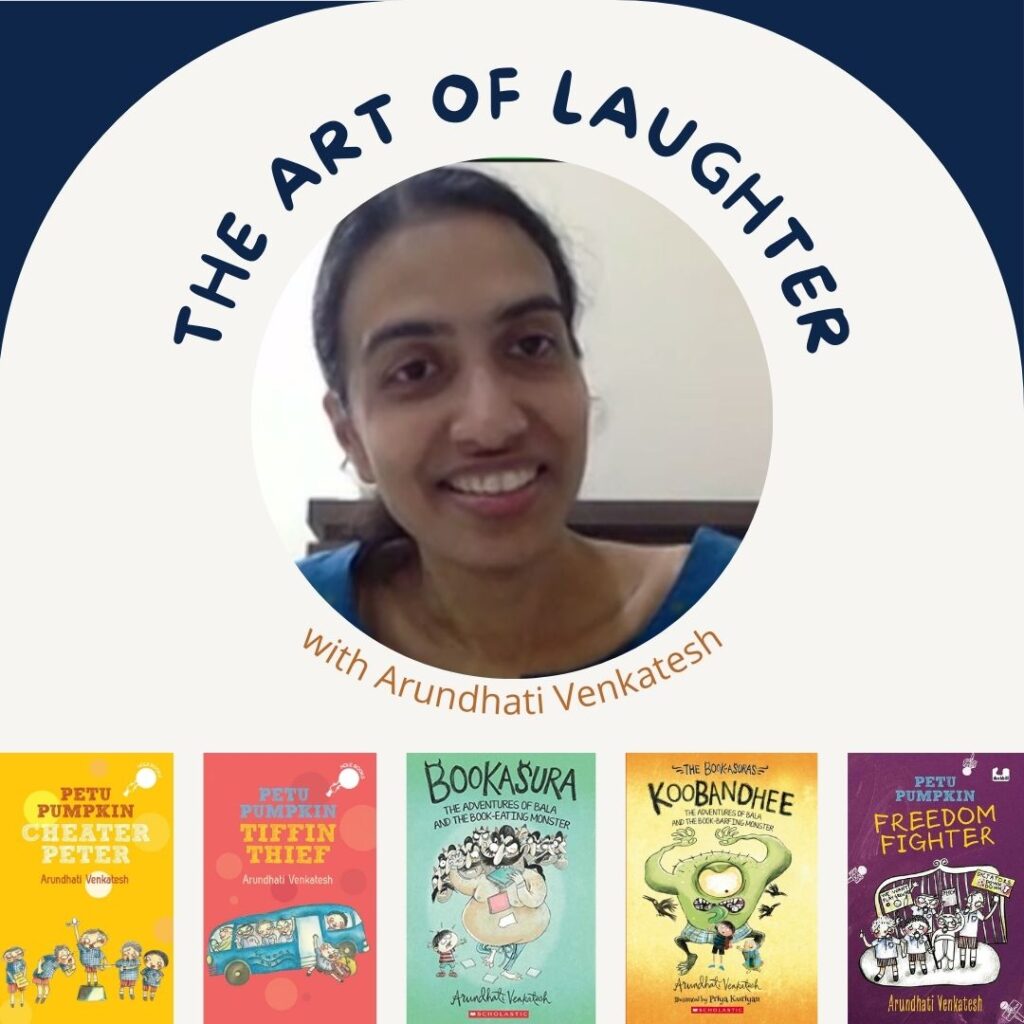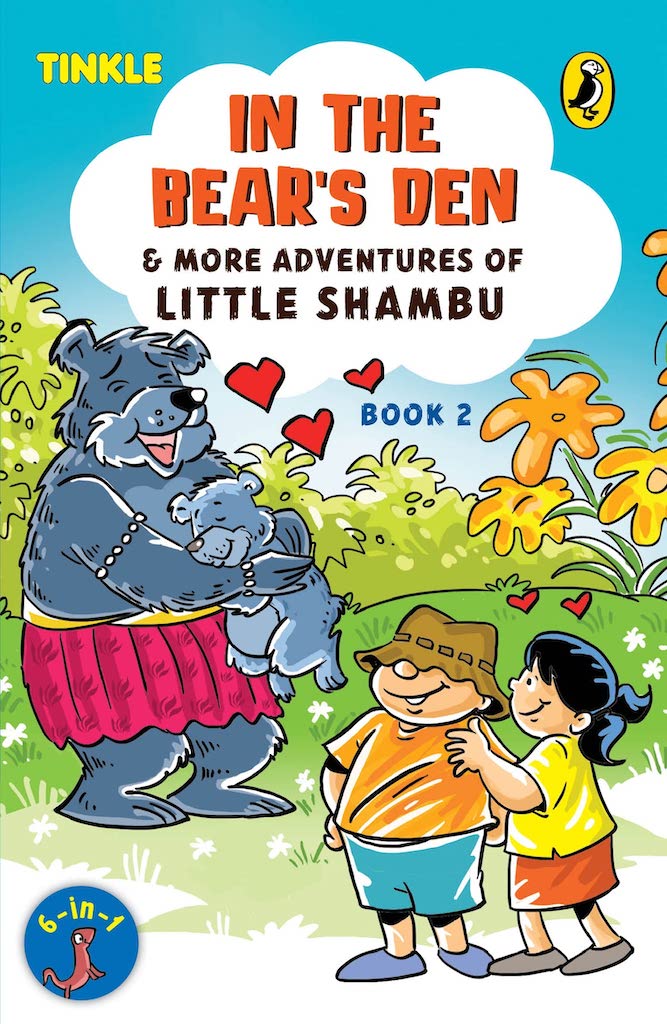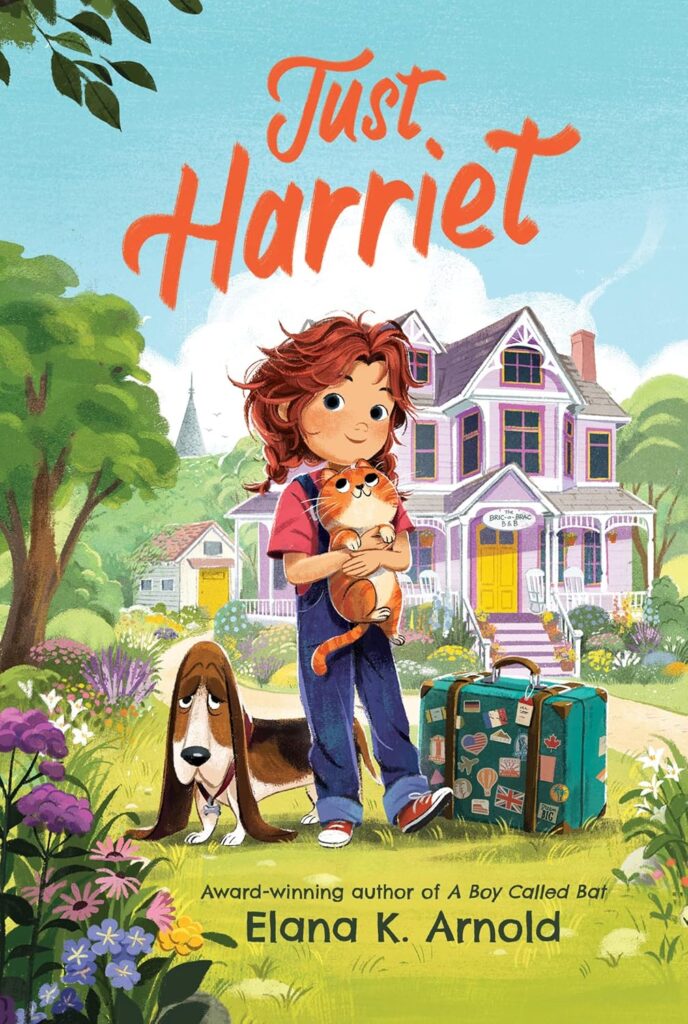The Clockwala’s Clues
March 1, 2025
We’re going to read my hOle book, The Clockwala’s Clues at my book club in April 2025! I’ve done many author events based on the book, but they’ve all been in-person sessions. Looking forward to my first online session with the book.
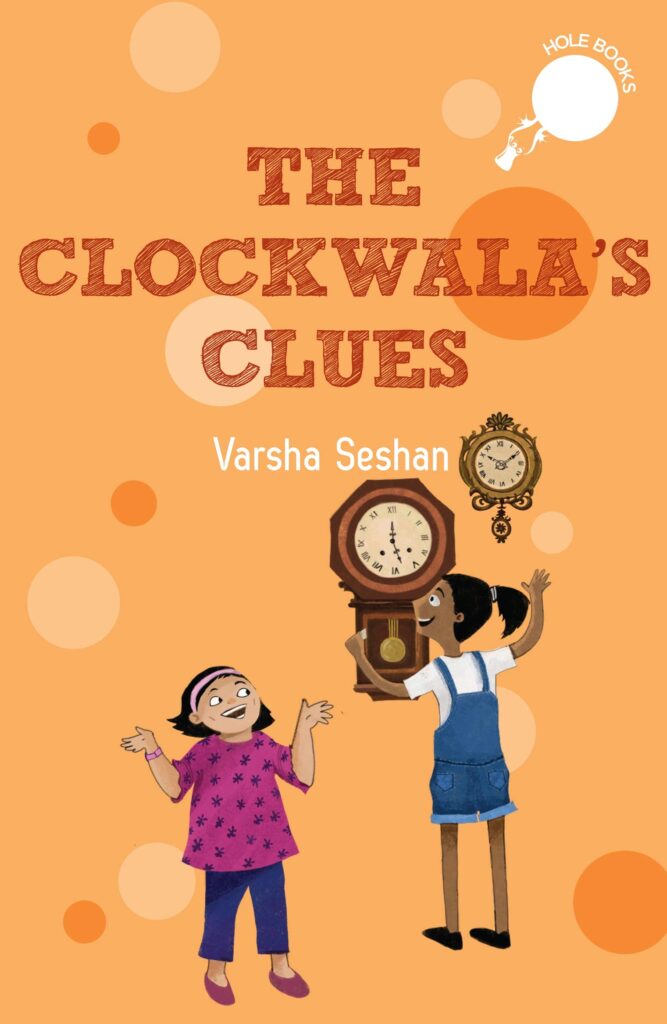
Puzzles
Jasmine and Sheba love puzzles. Do you? Can you solve a set of puzzles about clocks and time?
Tongue Twisters
If two witches were watching two watches, which witch would watch which watch?
How fast can you say that? Have fun with Clockwala Uncle’s tongue twisters, trying to say each tongue twister faster and faster every time you try!
Idiom Quiz
There are so many idioms about time! Let’s race against time and try to beat the clock as we do a quiz on idioms related to watches, clocks and the time.
Join a book club!
The Clockwala’s Clues is part of a lovely series of books–the hOle books. Each edition of my book club begins with a book from the series. This one was shortlisted for the Neev Book Award in 2021, and I’m waiting to read it with my book club!
Registrations are now closed for the April-May 2025 edition of my book club. New batches begin every alternate month. Join my mailing list if you would like to receive email notifications about my programmes. Alternatively, follow me on social media – Facebook and Instagram – for regular updates.
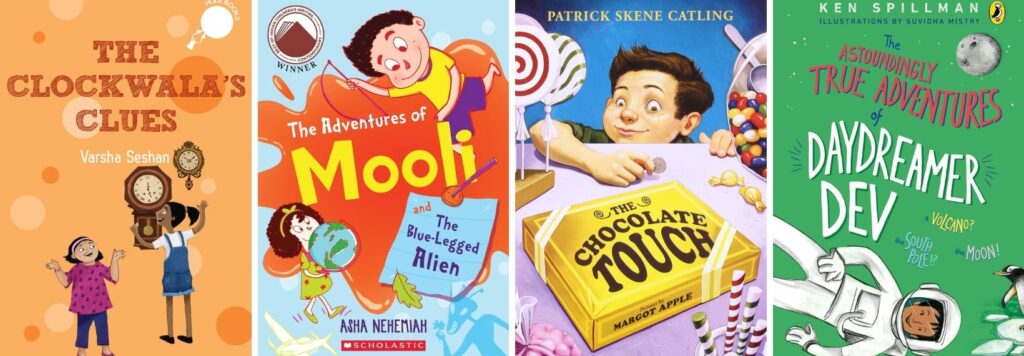
My Year in Workshops – 2024
January 12, 2025
As someone who loves routine and predictability, it’s amazing how unpredictable my workshops are, each year! Teacher training workshops took me to Indapur, Goa, Satara, Talegaon, Nagpur and Beed, in addition to schools all over Pune. This also meant that I did multiple book club and writing sessions from hotel rooms and cafés, just like last year.
I also continued to run my in-person writers’ club at St. Mary’s School, Pune, although I often have to run those sessions online too because I travel for work.
With my book clubs, I read 39 books; with my writing courses, I created three e-magazines; it was quite a year!
Book Clubs
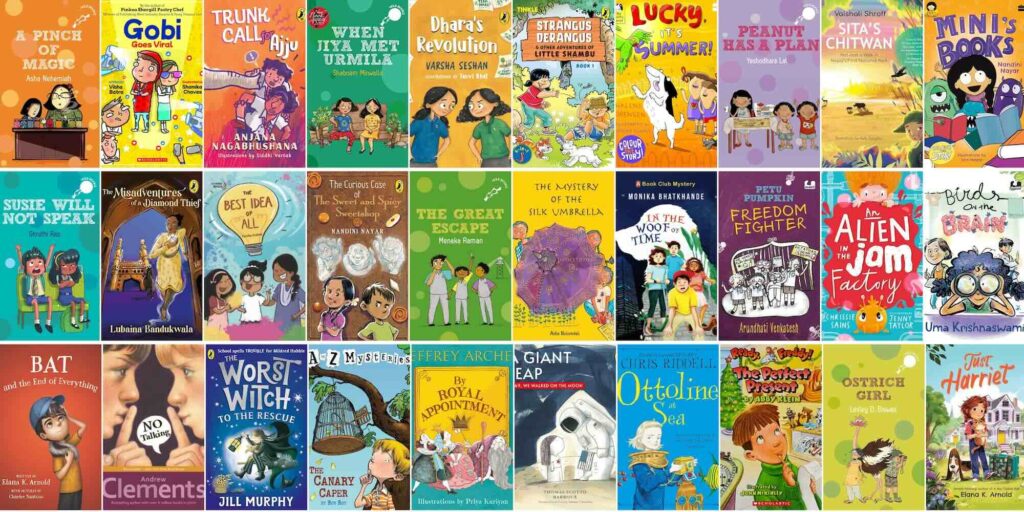
My book clubs are always rewarding. Bringing books to children is such a joy! With the little ones, it’s heart-warming to see how they slowly start reading more and more fluently. With the older ones, conversations become more nuanced, and the activities we do get more creative and imaginative.
With ages seven and eight, I read 22 books (we’re in the middle of our 23rd one), and with ages nine and ten, I read 16. I had enough registrations to run every batch that I scheduled, unlike in 2023. I met children from several parts of the world, and even ran a special batch for children from Europe and Dubai!
Something else that stood out for me last year is that four writers volunteered to visit my book club and talk to the children – Chrissie Sains, Vibha Batra, Stuti Agarwal and Lubaina Bandukwala. It was such a treat!
I have no idea how long my online book clubs will continue to run. Now that the pandemic is long past, parents are keen to reduce their children’s screen time—and rightly so! But each year brings new adventures, so let’s see what 2025 has in store for me!
Creative Writing
Some of the children who joined my book club aged seven are now eleven-year-olds, part of my writing programmes! It’s been lovely watching them grow and blossom. Over the last couple of years, I’ve met a few of my online students for the first time, but there are still dozens I’ve never met!
I ran six online writing programmes in the year for ages nine to seventeen. A parent urged me to launch a batch for ages 15 to 17 for the first time, and I did, but it’s tough for teenagers to commit to the kind of writing my courses demand. Exams, school events, sports … everything gets in the way.
As usual, I had six guests visit my programme, and each one was wonderful.
We created three e-magazines, which is something I started doing to encourage children to work on feedback they receive and edit their work to the best of their abilities. At my online writing programmes, we created issue 4 and issue 5 of WORDS, and at St. Mary’s School, we created the very first issue of THE WRITE PLACE. New issues of both e-magazines will be out soon!
I have new online workshops beginning every alternate month, and I’m always open to looking at offline workshops should schools require them. If you would like to receive email notifications about my programmes, please fill this form. Alternatively, follow me on social media – Facebook and Instagram – for regular updates.
Meanwhile, a new year of workshops has already begun!
Boo-Boo the Eco-Warrior
January 7, 2025
I don’t like horror stories, but what about stories featuring a friendly, helpful ghost? Boo-Boo the Eco-Warrior is one of those! Written almost like a series of short stories, this book by Tanushree Podder is a child-friendly read, made all the more engaging by the use of varied font sizes and, of course, pictures. Boo-Boo the ghost, along with her human friend Tanya, embark on a set of adventures including a rescue mission and justice for an old man employed by a cruel shopkeeper. I’m sure my book club will enjoy this one!
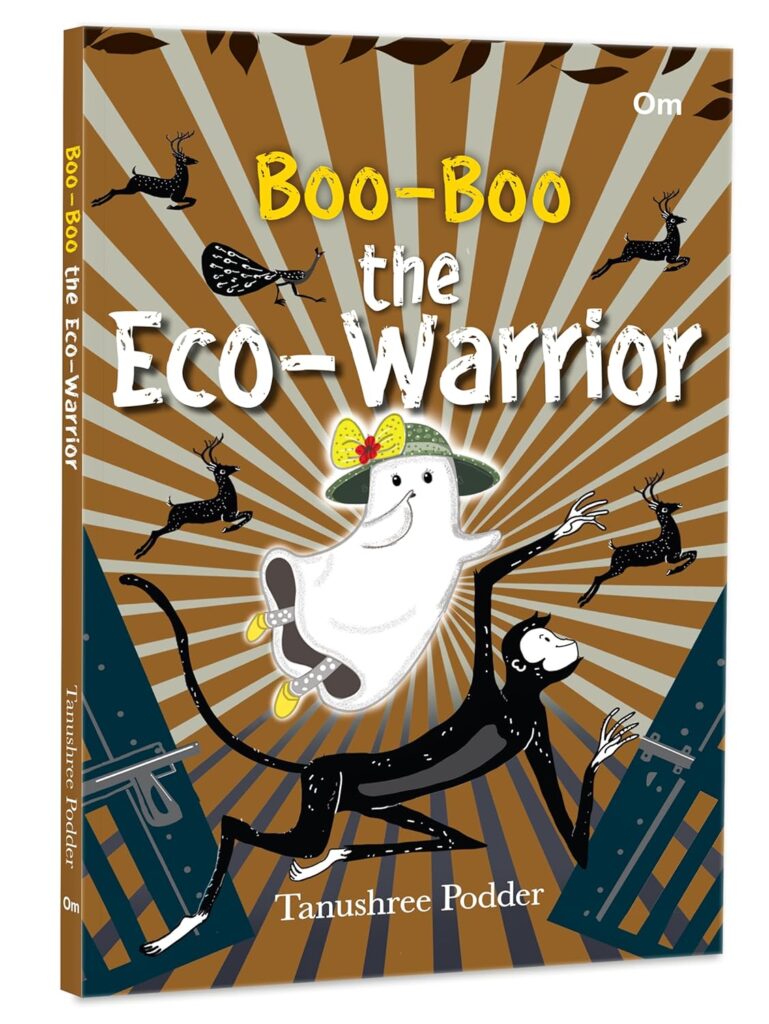
A Ghostly Friend
Wouldn’t it be useful to have a friend who can turn invisible at will? What adventures would you go on together? Tanya and Boo-Boo have some answers, but I know that my book clubbers will have more!
Newspaper Bags
Schools often use the phrase “art integration”, something that is an integral part of a book club. Tanya makes newspaper bags in an attempt to save the environment. We’ll do that too, in class!
Eco-Warriors
A few ghosts are forced to move to another tree because the tree they inhabit is cut down. Is there anything we can do to save the environment? As children, do my book clubbers think they have agency? Can they make a difference? Let’s find out!
Join my book club!
I’ve said it before, and I’m sure I will say it again—if you want to create readers, start early! The most common reasons children give for not reading are:
- It’s no fun!
- I don’t have the time!
- It’s boring!
A book club is a great way to counter all three!
Registrations are now closed for the February-March 2025 edition of my book club. New batches begin every alternate month. Join my mailing list if you would like to receive email notifications about my programmes. Alternatively, follow me on social media – Facebook and Instagram – for regular updates.
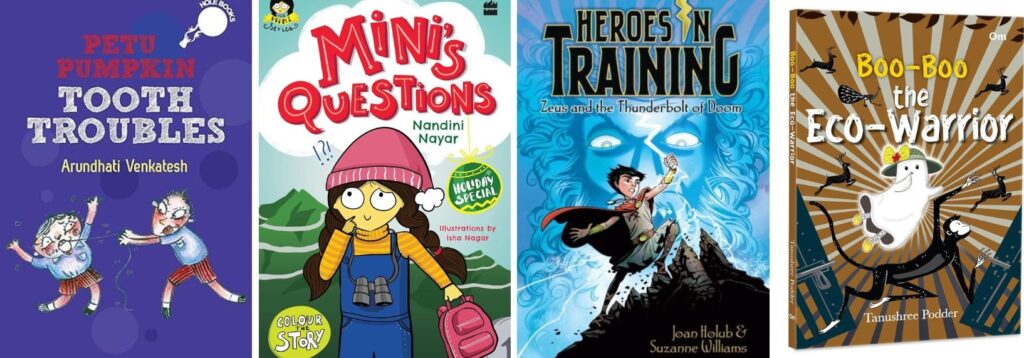
Misfit Madhu
January 6, 2025
We’re rereading Misfit Madhu at my book club! It was a favourite when I read it two years ago, although it’s longer and slightly more complex than the books we usually read. I’m waiting to read it again!
Madhu makes an app that goes viral. At first, she can’t quite believe it, but soon, she begins to bask in the attention. Things quickly go wrong, though, and Madhu must decide between what she wants and what’s right. Here’s what we’ll do as we read the book!
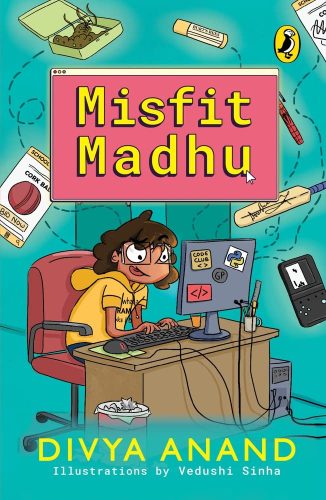
Apps
When we read Cricket for the Crocodile, we did an activity where we made our own games. One child made a rudimentary online game, which made me wonder: what apps do children feel they need? While we won’t create an app (I know nothing about coding!), we will try to design one, coming up with a name, a purpose and details of what the app can do, no matter how farfetched.
What would you do if ...?
What would you do if you were in Madhu’s place? What about if you were in her best friend Noor’s place?
Misfit Madhu sparks all kinds of conversation topics from the meaning of friendship to doing what is right. At several stages in the story, we’ll stop and reflect on what we would do if we were in the characters’ places. Giving the children similar situations, we’ll engage in a little role play too.
Story-Based Games
As writing is an important component of Read, Write, Explore, we’ll explore a different kind of story – something that could work as a story-based game. We have just one class to work with writing, so we’ll begin with each child discussing a story-based game they enjoy playing, bringing the idea down to setting, characters, plot and structure. Following that, we will try to change the characters and setting and see whether we can create the rough outline of a story-based game of our own.
Join a programme!
Registrations are now closed for the February-March 2025 edition of Read, Write, Explore. New batches begin every alternate month. Join my mailing list if you would like to receive email notifications about my programmes. Alternatively, follow me on social media – Facebook and Instagram – for regular updates.
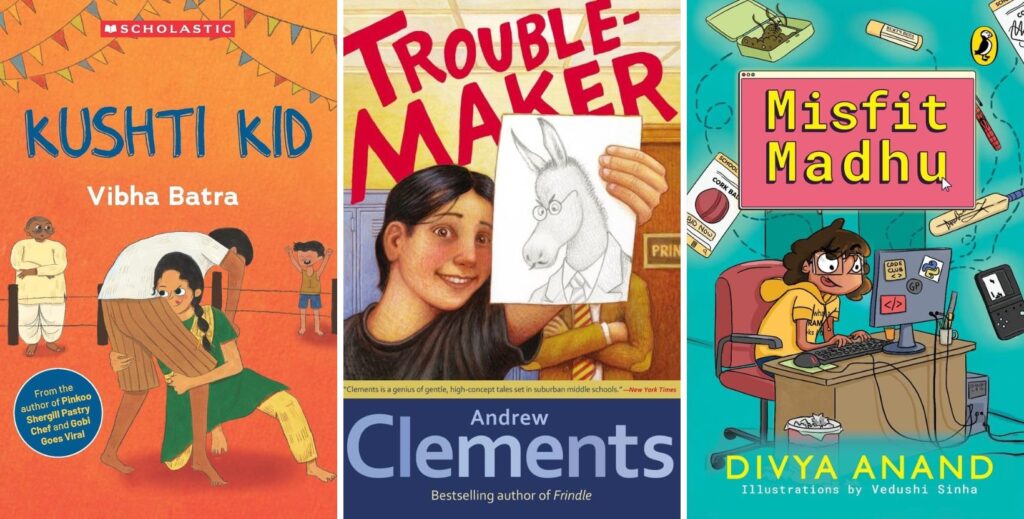
Zeus and the Thunderbolt of Doom
January 5, 2025
Zeus and the Thunderbolt of Doom opens with the oracle at Delphi predicting the fall of the Titans. The future is misty and the oracle’s glasses are foggy, so she can’t quite tell what will happen. What lies ahead? Dancers? Oh, no. Danger. Danger lies ahead.
On that humorous note, we begin the story of Zeus, who has no idea that he isn’t an ordinary ten-year-old boy. Sure, it often feels like the lightning is after him, but then, that isn’t possible, is it? It’s a coincidence. It has to be. Except for the fact that each time lightning strikes him, he hears a voice saying, “You are the one.”
I thoroughly enjoyed reading Zeus and the Thunderbolt of Doom, which made me sure that my book club would love it too. Adventure, suspense and a good dose of mythology make it a fun read!
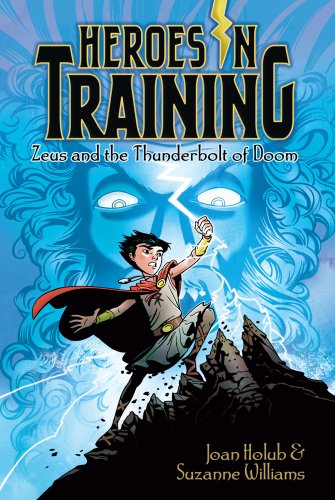
Chip English
At the temple in Delphi, Zeus discovers a rock chip, which speaks to him in Chip Latin. What does this mean? Move the first letter of a word to the end and add -ip to it. So, for instance, take the word lion. It becomes ion-lip. I loved p-language so much as a child that I’m sure it will be fun playing with Chip English at my book club!
Homophones
“Flea!” say the Harpies. At least, that’s what Zeus understands. He’s nettled. He’s not a flea! He may be small, but not a flea, certainly! It takes a while for him to realise that they mean ‘flee’ not ‘flea’. This is the perfect context to introduce homophones to my book club. We’ll see how many homophones we can think of, and try to see what sort of confusion these homophones could create.
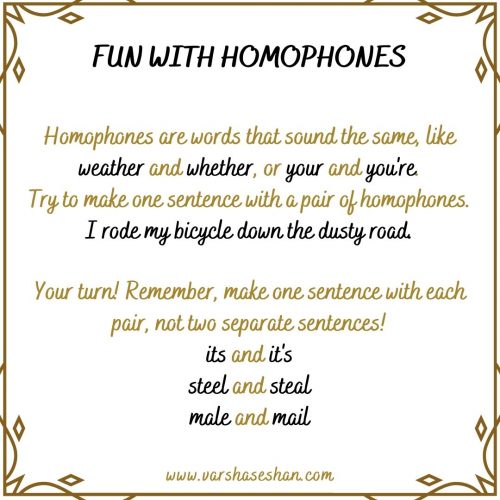
Friends
As a child, Zeus’s friends are a nymph, a bee and a goat. What unusual friends do you think would be useful? In what ways would they help you, and in what ways could you help them?
Join my book club!
Registrations are now closed for the February-March 2025 edition of my book club. New batches begin every alternate month. Join my mailing list if you would like to receive email notifications about my programmes. Alternatively, follow me on social media – Facebook and Instagram – for regular updates.

Mini’s Questions
January 3, 2025
We read Mini’s Books a while ago, and it was fun! As a couple of book clubbers who read it with me have already signed up for the February 2025 edition, I decided to read another book from the series. The familiarity of characters always makes for a fun reading experience!
Children have more questions than adults can answer, and soon enough, adults get fed up of answering their endless questions. But what if questions can help solve a mystery? Would parents sit up and take notice?
Like the rest of the Mini series, Mini’s Questions is a simple, early reader chapter book that brings pictures and text together in an engaging way!
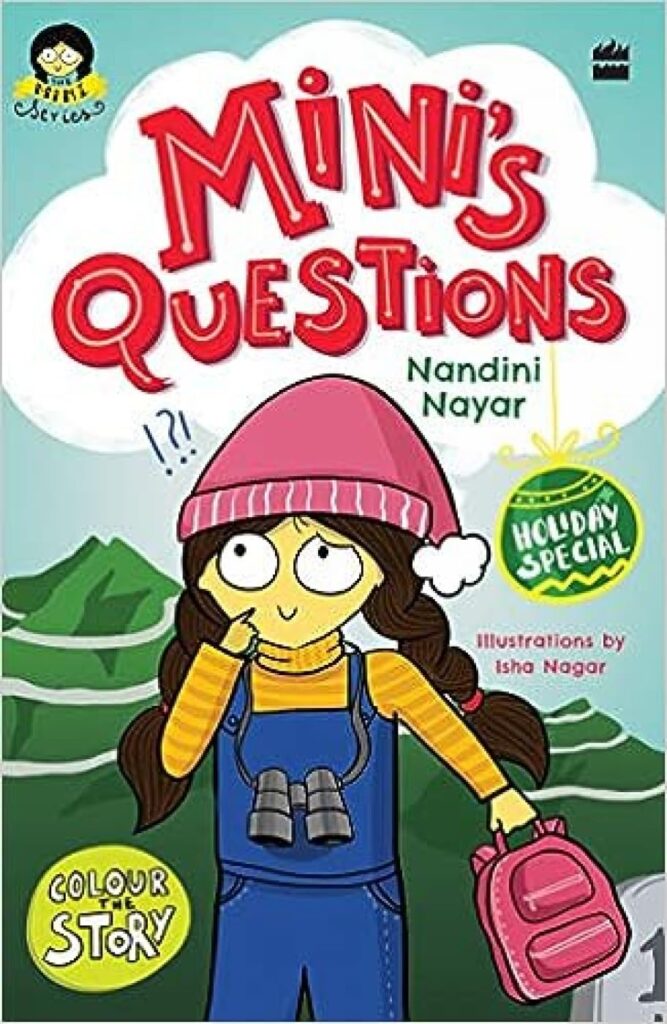
Questions
Often, when I ask children if they have any questions, they have none. But what about if I give them a picture and a few guiding questions? Let’s see what other questions they have! A curious mind leads to all kinds of creative exercises!
Mysteries
What questions do you think you need to ask to solve a mystery? Do you think people would answer them honestly?
As we read, I will give the children a simple mystery to solve, with a few basic clues. Let’s see if they can use their detective skills to solve the mystery!
Colour the story!
The Mini series and the Lucky series are fun because the pictures are meant to be coloured! We’ll spend just a little time colouring in class too. It’s always fun!
Join a programme!
Registrations are now closed for the February-March 2025 edition of my book club. New batches begin every alternate month. Join my mailing list if you would like to receive email notifications about my programmes. Alternatively, follow me on social media – Facebook and Instagram – for regular updates.

Kushti Kid
January 2, 2025
Kushti Kid is another lovely book by Vibha Batra, one that I know my book club will enjoy! For me, the challenge when it comes to introducing books published by Scholastic India is that there’s no ebook available, which often means that I have to restrict my book clubbers to children living in India, or at least children who have access to books in India.
Nonetheless, I’m looking forward to reading this with my book clubbers!
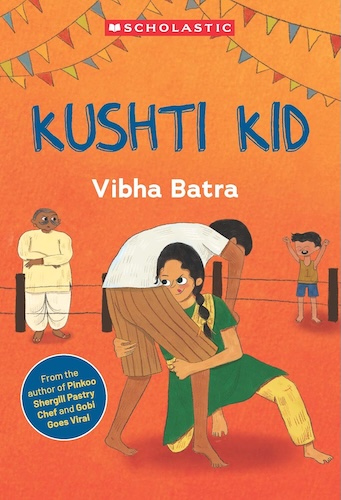
Sport
What is kushti? Looking at the cover image, do you feel the girl stands a chance? Why, or why not?
As Kushti Kid is the first book we will be reading next month, I would love for my book clubbers to tell me what sports they play and watch.
Also, since I like to link reading to other activities too, we’ll do a quick listening exercise on sport as well.
Sportspeople
A discussion on sport will also be the perfect prompt for the children to talk to us about sportspeople they love! I’d love to hear any sports trivia they may want to share, in addition to a little bit about why they admire a particular player.
Book Review
Writing is an important part of Read, Write, Explore. One class every two weeks is devoted to writing of some sort. With Kushti Kid, we will work with book reviews. Is a review a summary? A synopsis? Often, children say “yes”. Every so often, I like to work with book reviews to help balance fact and opinion in an engaging way.
Join a book club!
Read, Write, Explore is an ongoing reading programme that brings together books and writing. It’s a great way for children to engage with stories, express opinions and get creative. I’ve been running the programme for four years now, and it’s always fun!
Registrations are now closed for the February-March 2025 edition of Read, Write, Explore. New batches begin every alternate month. Join my mailing list if you would like to receive email notifications about my programmes. Alternatively, follow me on social media – Facebook and Instagram – for regular updates.

Other books by Vibha Batra we’ve read and enjoyed at my book club:
The Art of Laughter
December 10, 2024
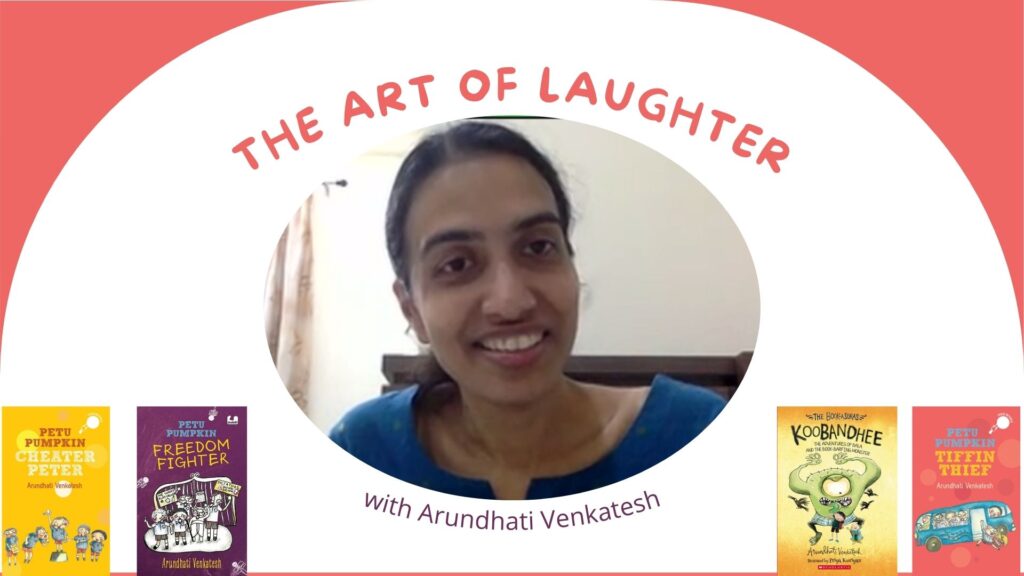
Every time I begin a new batch of my writing programme, it feels like the weeks fly by! This edition is nearly at an end, marked by our third and last guest session of the season.
This session was conducted by Arundhati Venkatesh, author of a number of humorous books. My book clubbers have read several – Bookasura (which we’re reading again in December 2024), Koobandhee, Petu Pumpkin: Freedom Fighter, Petu Pumpkin: Tiffin Thief and Petu Pumpkin: Cheater Peter.
Step by step, Arundhati led us through the writing of a humorous story. To begin with, if you want to write humour, you must enjoy reading funny stuff. This is something I say often—if you don’t read, you cannot write. I don’t restrict my definition of reading to fiction, though. We consume content in all kinds of ways, including memes and blog posts!
Secondly, the core of humour is truth, something that I completely agree with. An important idea that I’m glad Arundhati stressed is that the target of a humorous story should always be the person in power rather than someone who has no power or is helpless. The joke must be on the people who have authority. To paraphrase Terry Pratchett, when you make fun of people in power, that is satire. When you make fun of people without power, that’s bullying!
Having said that, Arundhati also came back to the idea that you can write about anything at all through the lens of humour. Her books are a great example – she has written humorous books about science, mathematics and the constitution!
Arundhati shared a handy list of ideas to get going with our own humorous stories. I hope at least some of the participants put her ideas into practice and write a story!
PodLab with Menaka Raman
November 12, 2024
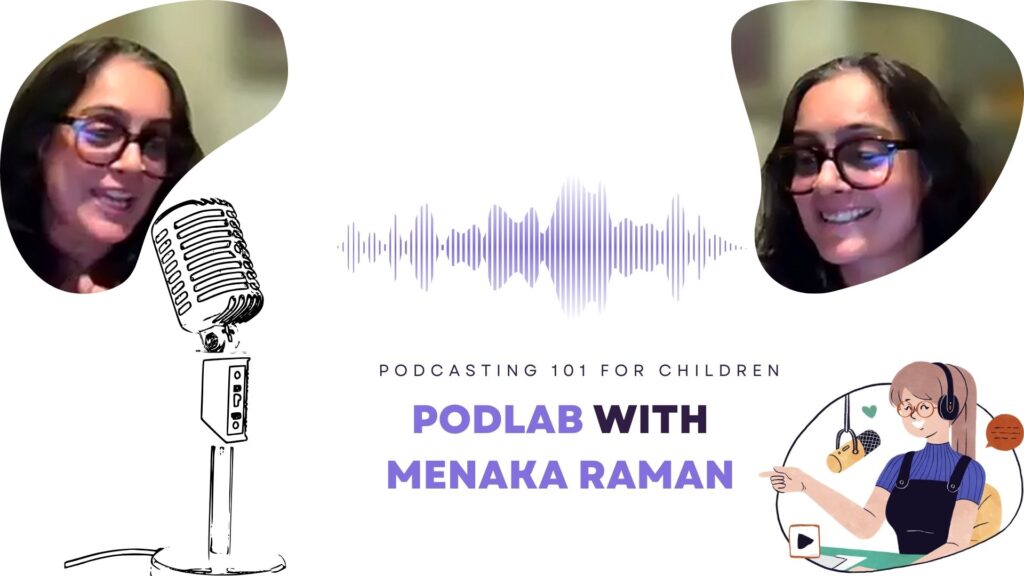
At the Neev Literature Festival 2023, I watched Menaka Raman conduct a session on character development, and I knew I wanted to invite her to my writing programme. She did a session for us today, and what an engaging session it was! Her lively teaching style made the workshop a treat.
This workshop was my twenty-sixth guest session, and my very first one on podcasting. Menaka took us through the basics—from what a podcast is to what equipment we need to record a podcast.
In some ways, a podcast is like Netflix for audio – it has episodes that are recorded and that you can listen to in your own time. That’s what makes it different from radio, which you have to catch only when it is broadcast!
Through a series of writing exercises, Menaka helped us experience firsthand the process of podcast creation. Asking the right questions, choosing a theme, taking our time editing—all of it is important.
Finally, Menaka reminded us that we don’t need any fancy equipment to create a podcast. Recording on a phone is easy enough, and to edit, we can use Spotify, Audacity, iMovie and Garage Band. Special effects add to the experience of podcasts, and BBC, for instance, has 33,000 sound effects that you can use for free.
It was a rewarding session, and as often happens, I think I learned as much as the children did!
In the Bear’s Den
November 7, 2024
Little Shambu is such fun! I read In the Bear’s Den and Other Adventures of Little Shambu some time ago, and at my book club, we read the first book in the Little Shambu series earlier this year. Short stories are fun! I’m looking forward to reading more of this young animal lover’s adventures with my book club!
Dialogue
Role play for dialogue reading is something that I repeat frequently at my book club. Paying attention to paragraph structure and punctuation, and understanding how we know who says what is an important step towards creating stories as the children grow older!
Drawing an Animal
When we read Ostrich Girl, we discovered that drawing an ostrich isn’t actually very difficult. What about a bear? We’ll draw a bear together and perhaps a couple of other animals too!
Unscramble
I know that unscrambling words may not be very easy for my book clubbers, but I’m happy to give it a shot. The theme of animals will stay the same—let’s see how many animal names we can unscramble!
Join a book club!
Book series are a great way to get children excited about reading more! I’ve lost count of the number of parents who’ve told me their child has asked for the rest of the series after being introduced to one book at my book club. It’s happened with the A to Z Mysteries, Ottoline and so many more!
Registrations are now closed for the December 2024 -January 2025 edition of my book club. New batches begin every alternate month. Join my mailing list if you would like to receive email notifications about my programmes. Alternatively, follow me on social media – Facebook and Instagram – for regular updates.

Paati vs UNCLE
November 6, 2024
We’re rereading Paati vs UNCLE by Meera Ganapathi at my book club! It is a delightful combination of funny and serious, action-driven and character-driven, making it a perfect book club read.
Inju is all set for a quiet, boring holiday with his Paati. That’s just the way he likes it. Unfortunately, from the moment he gets to Parijat Retirement Colony where his grandmother lives, he realises that it’s going to be an exciting, adventurous holiday, not a quiet, boring one. It isn’t what he wanted, but when his Paati is upset and angry, what can he do except take charge?
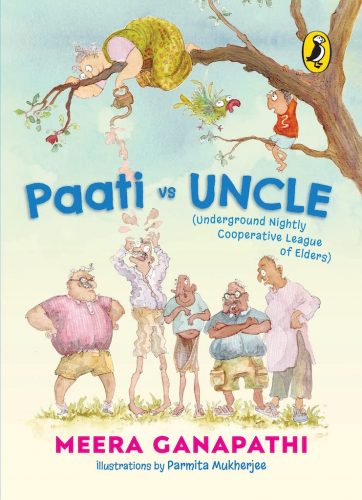
Making Posters
Inju makes a poster inviting people to join PAATI – People’s Association Against Thieves International. Someone else puts up a poster about a missing parrot, Gangaram.
Posters are always fun to make! What if you want to get people to adopt kittens in your society? And if we move to the realm of fantasy, what if there’s a monster on the loose and you need someone to fight it? Making posters is always fun!
News Reports
While the children at my programme are a little too young to write formal news reports, we will explore the writing of news briefly. I will give them a template and a headline, asking them to create a news report of their own.
Acrostic Poetry
Acronyms can be silly, clever or fun. Sometimes, acronyms become so common that we forget that they are acronyms! I remember when I discovered that SCUBA is an acronym for instance; I was amazed.
With PAATI and UNCLE as examples, we’ll work with clever and crazy acronyms before moving on to writing acrostic poetry.
There’s so much more we can do with this book – discuss interesting food, talk about what is precious to us and to no one else (like Paati’s airtight dabbas!), and work out how to solve a crime. Looking forward to reading together!
Join my book club!
Read, Write, Explore is an ongoing programme that combines the joy of a book club with an introduction to creative writing. There are twelve classes in each edition of the programme, and three of these classes are devoted to writing. Additionally, we play vocabulary games, draw a little, discuss characters and stories, and much more.
Registrations are now closed for the December 2024 -January 2025 edition of Read, Write, Explore. New batches begin every alternate month. Join my mailing list if you would like to receive email notifications about my programmes. Alternatively, follow me on social media – Facebook and Instagram – for regular updates.
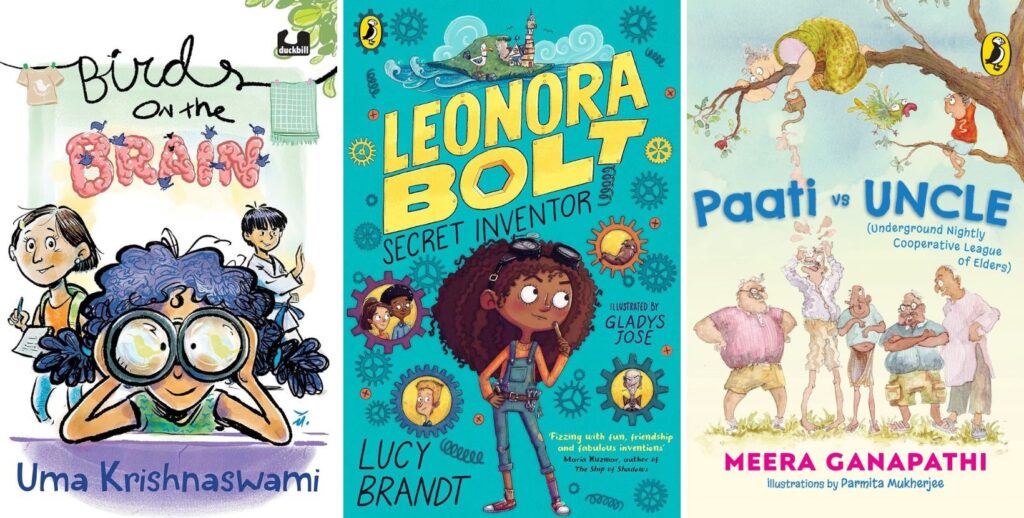
The Magic Finger
November 5, 2024
I typically shy away from very well-known books at my book club because I feel that children will come across these books through schools and bookshops anyway. But I’ve always loved Roald Dahl’s work, and what is a book club for if not to spark the joy of reading? We’ve read Fantastic Mr Fox and Esio Trot. Next month, we’ll read The Magic Finger!
Anger
While all of us might wish we had a magic finger to zap someone who makes us angry, that isn’t practical, is it? What do you do when you’re angry? What makes you angry?
Superpowers
Discussing superpowers is a great way to get creative. What superpowers would you like to have? What would you do with those superpowers?
Taking this further, what superpowers would you need to solve specific problems that we see around us?
Book Review
With my book club for ages seven and eight, I often find that the children don’t always understand the details enough to form an opinion about the books we read. It’s for this reason that we often have book discussions, talking about what we like and don’t like about the book. This time, we’ll take this further with brief, simple book reviews that explore our understanding of character and story.
Join a book club!
There’s no better way to fall in love with reading than to start young!
Registrations are now closed for the December 2024 -January 2025 edition of my book club. New batches begin every alternate month. Join my mailing list if you would like to receive email notifications about my programmes. Alternatively, follow me on social media – Facebook and Instagram – for regular updates.

Leonora Bolt: Secret Inventor
November 4, 2024
I borrowed Leonora Bolt: The Great Gadget Games from a library recently, and my first thought was that the series would be perfect for my book club!
A science-loving protagonist with imaginative, innovative ideas, a secret inventor, an unusual set of friends … it’s full of possibilities! And that’s why we’re going to be reading the first book from the series, Leonora Bolt: Secret Inventor at my book club next month.

Friendship
Leonora Bolt’s friends include an otter, a cook, a sea captain and a boy who washes up on the island. This will be our prompt to write about an unusual friendship we’d love to have. If you could befriend anyone, whom would you befriend and why? How do you think you could help each other?
Inventions
If you are on an island in the middle of nowhere, but you were the smartest person in the world, what would you invent? How would your invention work?
I love working with wacky inventions of all kinds. I have a poem that plays with innovation and invention too, Making a Clone, though the characters in the story aren’t nearly as successful as Leonora Bolt!
Picture Prompts
Picture prompts are a great way to get started on a story of your own, and The Thinking Collection has a couple of inspiring images of machines. We’ll use these, in addition to a few verbal prompts, to write a story of our own.
Join a book club!
Read, Write, Explore is an ongoing programme that combines the joy of a book club with an introduction to creative writing. There are twelve classes in each edition of the programme, and three of these classes are devoted to writing. Additionally, we play vocabulary games, draw a little, discuss characters and stories, and much more.
Registrations are now closed for the December 2024 -January 2025 edition of Read, Write, Explore. New batches begin every alternate month. Join my mailing list if you would like to receive email notifications about my programmes. Alternatively, follow me on social media – Facebook and Instagram – for regular updates.

Bookasura
November 3, 2024
Some books demand to be read at reading programmes. Lucky Girl, with its exploration of poetry. Chitti’s Travelling Book Box with its message of spreading the love for reading. Book Uncle and Me, with the need to save a lending library.
And Bookasura, with its book-eating asura. And that’s why we’re rereading this one at my book club!
Bala loves books. He devours them. Not literally, of course. The problem, however, is his baby sister Meera, who actually likes to eat books. When Bala meets Bookasura, a book-eating demon, he sees a strong resemblance between Meera and the asura. What can he do to defeat Bookasura? What weapon does he have to destroy this book-loving monster?
Bookasura is a fun, funny book about a boy fighting a villain who is bigger and stronger. He uses the skills he has – his stories and his wit. Imaginative and thrilling, I know this is the perfect book to read next with my book club!
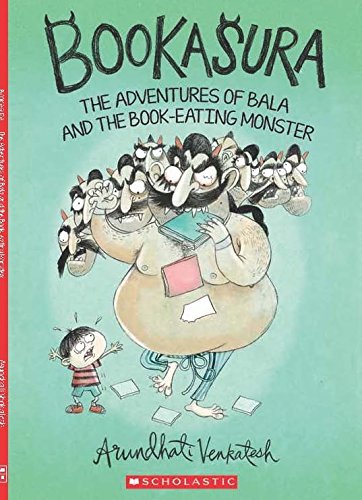
Name the Asura!
Raghu Thatha tells Bala the story of Bakasura. Is that what makes Bookasura enter Bala’s life? Maybe. Maybe not.
But naming an asura can be fun! What other asuras can you come up with? What terrible things do they do?
Out in Nature
Being outdoors is precious. Bala spends time on a farm, throwing stones at mangoes, looking at jackfruits and lemons, and making a compost heap.
I would like the children to step out of the house, pick up something from nature and talk about it. How does it look? How does it smell? Does it make a sound?
This could be a leaf, a twig, a pebble – anything!
Books
We’ll play a little book game together, just like Bala from Bookasura. Book scavenger hunts are always fun!
Join a book club!
Registrations are now closed for the December 2024 -January 2025 edition of my book club. New batches begin every alternate month. Join my mailing list if you would like to receive email notifications about my programmes. Alternatively, follow me on social media – Facebook and Instagram – for regular updates.

Birds on the Brain
November 2, 2024
Uma Krishnaswami’s Birds on the Brain is such a lovely book! I’ve read Book Uncle and Me with my book club, and I just revisited the post I wrote about it. Three years ago, I wrote about having discovered verse novels “quite recently” and now I have two verse novels of my own!
In Birds on the Brain, we meet lots of familiar characters, and although I love verse novels, I enjoyed this book more than the first. The characters, particularly the protagonist Reeni, are wonderfully relatable. Reeni, for instance, is a balance of self-centred and selfless. She has birds on her brain and it takes her a while to notice that not everyone is motivated by the same things. Yet, she makes an effort. She doesn’t want to lose her friend Anil and she does want to help the istri lady. But how?
This endearing story shows us just how she can catch two birds with one phone, to use her words, much kinder than killing two birds with one stone!
Discovering overlapping themes in modern kidlit is delightful too–just like in Petu Pumpkin: Freedom Fighter and Dhara’s Revolution, Reeni bemoans the fact that children don’t have power!
A warning, though: like I wrote when I reviewed Pax, Journey Home, however, I would suggest you don’t read the blurb. Again, something in the blurb happens very late in the story!
Here’s what we’ll do as we read Birds on the Brain at my book club.
Hobbies and Interests
As Birds on the Brain is the first book we will read next month, it will be the perfect prompt to talk about what interest us. Anil loves karate. Yasmin loves books. Reeni loves birds. What about my book clubbers? What interests them, what are they curious about, and what hobbies do they have?
Birds
I will never tire of asking children to talk about their favourite birds! With The Paradise Flycatcher, The Golden Eagle, Talon the Falcon, A Flamingo in my Garden, Ostrich Girl … I’ve learned about so many birds!
Each time I do this activity, however, I gently nudge children to look at birds outside their window instead of talking about birds they’ve never seen. Perhaps the sunbird in the story will be another push in that direction!
Writing a Report
Surveys are fun! Just like Reeni and Yasmin, I will ask the children to think of a topic and conduct a survey of their own. What interests them? What would they like to find out about? What surprising results do their surveys have? I’d love to know!
The linked writing activity will be for them to compile their data and present it in a meaningful way. We’ll work on structure and form to write a report based on the surveys we conduct.
Join a book club!
Registrations are now closed for the December 2024 -January 2025 edition of Read, Write, Explore. New batches begin every alternate month. Join my mailing list if you would like to receive email notifications about my programmes. Alternatively, follow me on social media – Facebook and Instagram – for regular updates.

The Great Escape
November 1, 2024
Each time Menaka Raman posted about The Great Escape events, she urged participants to bring a spoon.
And then, when she autographed my copy, she wrote Spoontacular Varsha.
How could I not be intrigued? What’s the big deal about a spoon anyway?
You have to read The Great Escape to find out, and that’s why it’s the first book we’ll be reading at my book club in December.
Sachit wants to escape from school. And the best thing about finding a friend is that you can lay devious plans together, and do your best not to get caught as you execute those plans. A fun, mad read, I think the best part of the book is the way it ends, but I’m not going to give that away!

Spoons
We’ll do our spoon activity before we start reading The Great Escape. What I used to find (and perhaps still find) most exciting about a spoon is that you’re upside-down in there! And turning the spoon upside-down doesn’t help. What else can you do with a spoon, apart from turning yourself upside down? I’m waiting to find out.
New Places
One of the reasons Sachit wants to escape is that he is in a new school. New places are often frightening, especially until you find a friend. I’d love for the children to talk about their experiences with a new place. What do they do? How do they make friends? Are they afraid?
The Great Escape
A book called The Great Escape is perfect to explore escape games! I love treasure hunts and clues. We’ll imagine an escape room and I’ll give the children a set of clues they have to solve in order to escape!
Join my book club!
Registrations are now closed for the December 2024 -January 2025 edition of my book club. New batches begin every alternate month. Join my mailing list if you would like to receive email notifications about my programmes. Alternatively, follow me on social media – Facebook and Instagram – for regular updates.

Illustrating Picture Books with Ashok Rajagopalan
October 22, 2024
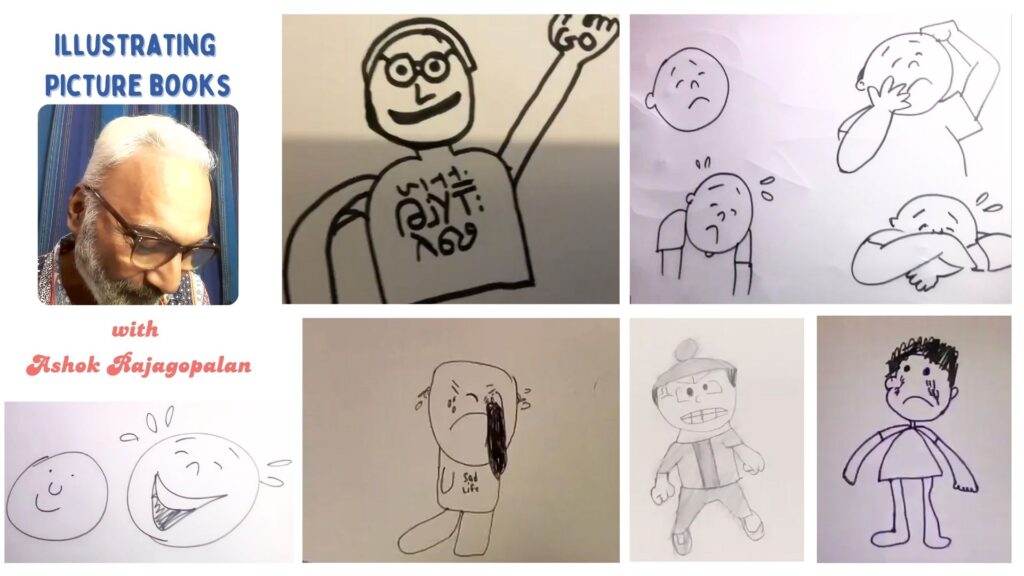
What an enriching session we had on illustrating picture books with Ashok Rajagopalan!
“I didn’t know this, but I make an angry face when I’m drawing an angry face!” Ashok said. “If I want to draw a sad face, I make a sad face myself.” I remember seeing something about Disney doing the same thing. Is it something all artists do?
Today’s focus was creating emotions in picture books. Among the most interesting things for me was the fact that the reader’s emotion can be quite different from what the character is feeling. Sometimes, a character is angry, or confused, but the reader laughs. This laughter is deliberate, and the illustrator must portray the character’s emotion in such a way that the reader feels compelled to laugh.
Using a series of drawing exercises, we worked on drawing emotion and then heightening these emotions, first through the face itself and then through body language, colours and setting. As with every art workshop I’ve organised, I’m amazed at how easily and quickly illustrators draw! Look at the top right illustration in the image above for instance. Isn’t it incredible? It was done in less than a minute!
The Best Idea of All
September 7, 2024
I’m always nervous about reading my books with my book club! I wonder if and when I’ll get over that. We’ve read Dragonflies, Jigsaws and Seashells, The Prophecy of Rasphora, Dhara’s Revolution and Flipped, and now, we’ll read The Best Idea of All.
A story about festivals and the climate crisis, The Best Idea of All explores how children can and do find ways to make a difference.
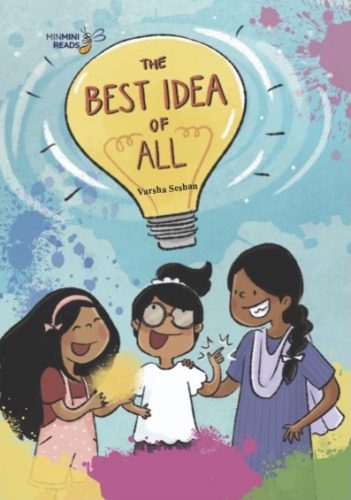
As I discovered through the many author events I did with The Best Idea of All, there’s so much I can do with the book! And especially as my book club runs online, we can bring in elements that would be rather difficult to do at an in-person session – like making natural colours.
Book Discussion
What is the climate crisis? And what can we do about it? The cover of The Best Idea of All reveals what festival the story is about – Holi. But in the middle of the worst drought the state has experienced in decades, how can Tarini, Antara and Saira celebrate Holi?
We’ll talk about what has caused the climate crisis and whether we as individuals can do something about it.
Saving Water
At my book club, we read each book over the course of three classes. At the beginning of each class, we’ll talk about what we do to save water. And at the end of the second session, we’ll share a whiteboard to create a virtual chart on water and what it means to us.
Making Natural Colours
Online sessions are perfect for art integration of this kind! Water shortage is just one problem when it comes to playing Holi. The second is the use of chemical colours that harm the environment. Together, we’ll explore how we don’t need chemical colours at all because making natural colours is both fun and easy!
Parents and teachers often ask me how to get children to read. While there’s no foolproof method, here are three suggestions I always give them:
- catch them young
- read exciting books (and not just the classics)
- make reading fun
I know I’m biased, but a book club is a great way to bring these three together. But equally, a book club is for children who already enjoy reading. Reading can be isolating, but a book club brings the excitement back with all the activities we do and conversations we have.
Join my book club!
Registrations are now closed for the November-December 2024 edition of my book club. New batches begin every alternate month. Join my mailing list if you would like to receive email notifications about my programmes. Alternatively, follow me on social media – Facebook and Instagram – for regular updates.

Dungeon Tales II
September 6, 2024
We’re going to reread Dungeon Tales II by Venita Coelho at my book club! And thanks to the Neev Literature Festival, I have an autographed copy!
Short stories work well with my book clubs, especially as we read just excerpts in class. Both volumes of Dungeon Tales were wonderfully received by the children, so I’m excited to read three more stories from this volume!
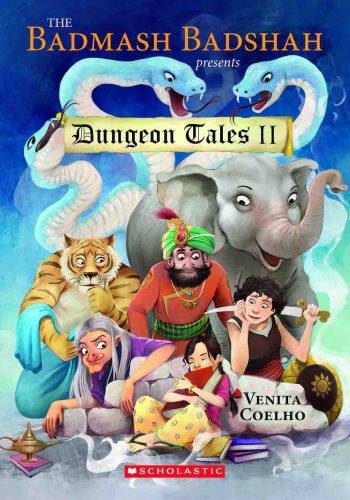
Roman Numerals
I loved Roman numerals as a child, and I always waited for the chance to use them. Letters that are actually numbers? Fascinating!
We’ll look at numbers, why the introduction of zero was important, and see how difficult it is to add XCIV and VI, for instance, while 94 + 6 is as easy as it gets!
Structure
Stories within a story within a story – I love the idea! What unique structures have writers played with? Is it possible for us to write a story using chat messages? Let’s find out!
Alliteration
How can I read a story about the Badmash Badshah and not encourage the children to play with alliteration? Huge Horribleness, Rudimentary Rottenness, Wonderful Wickedness … What else?
Join my book club!
Registrations are now closed for the November-December 2024 edition of my book club. New batches begin every alternate month. Join my mailing list if you would like to receive email notifications about my programmes. Alternatively, follow me on social media – Facebook and Instagram – for regular updates.
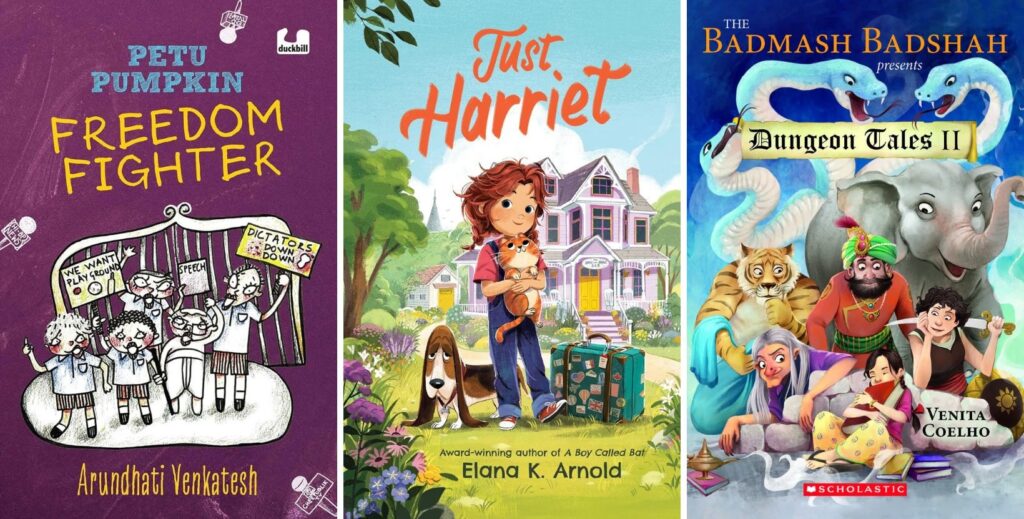
The Talking T-Rex
September 5, 2024
We’ve read two books from the A to Z Mysteries by Ron Roy; we’re all set to read another!
Before picking up The Talking T-Rex, I wondered whether it would be a scary book–that’s what the cover leads us to believe. But it’s not! We know from the very beginning that the T-rex is a machine; in fact, we first see it before it is assembled. The mystery revolves around the T-rex, yes, but it’s about who stole money from the T-rex’s belly. It isn’t about a T-rex going rogue! And the simplicity of the story makes it a perfect book club read.
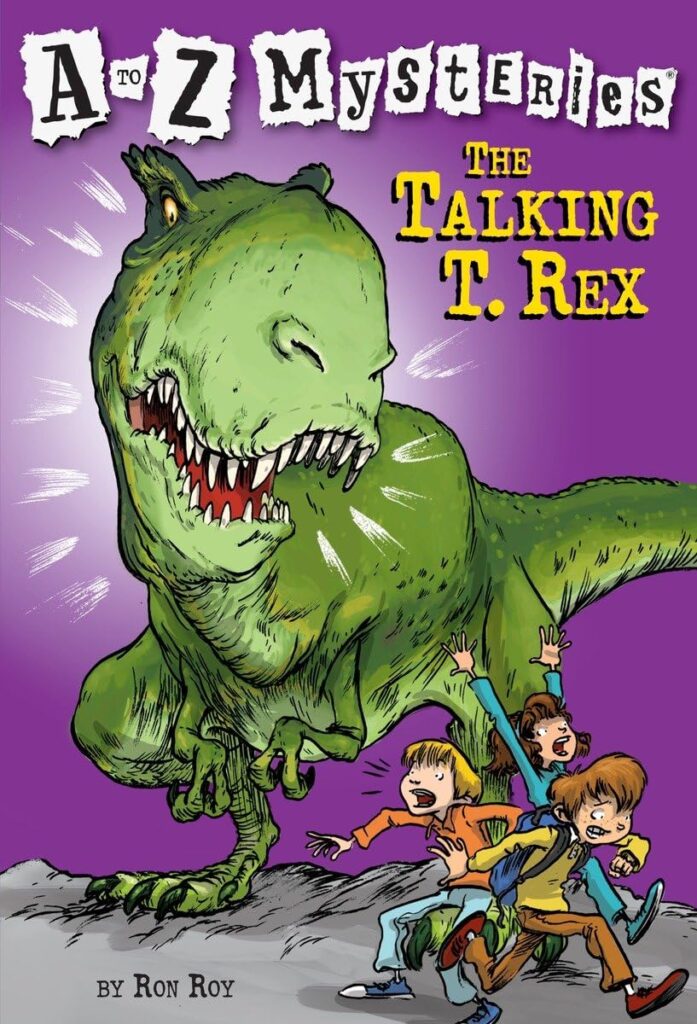
Inventions
A talking t-rex is an exciting invention! If you could invent anything at all, what would you create and why? How would it work?
Alliteration
‘Alliteration’ is a word that I introduce to my book club over and over again because it’s such fun to play with! The Talking T-Rex. The Canary Caper. And at my book club, so many more!
We’ll do a book scavenger hunt of alliterative titles and then try to invent a few alliterative titles of our own based on picture prompts that I share.
Picture Prompt
Using a picture prompt of a very interesting machine, we’ll work on a series of questions. What does the machine do? Who invented it? This is a lovely imaginative exercise!
I love introducing book series to my book club! I remember when we read The Absent Author. Two weeks later, one of my book clubbers told me she’d bought a few more and borrowed the rest from a library. There’s nothing like a series to keep children reading!
Join a programme
Registrations are now closed for the November-December 2024 edition of my book club. New batches begin every alternate month. Join my mailing list if you would like to receive email notifications about my programmes. Alternatively, follow me on social media – Facebook and Instagram – for regular updates.

Just Harriet
September 4, 2024
Harriet isn’t your typical protagonist. She lies, she’s selfish, and she’s often sulky and bad-tempered. Even as I read Just Harriet, I mulled over whether to introduce it to my book club. We’ve read and loved two books by Elana K. Arnold – A Boy Called Bat and Bat and the End of Everything – but this one’s quite different. The protagonist is younger; she’s just finished third grade. More, she behaves a lot younger; she’s not the sophisticated child we often see around us. But doesn’t that make her more real?
The answer, to my mind, was yes. And that’s why we’re reading Just Harriet at my book club for ages nine at ten next month.
Names
Harriet is named after the protagonist of Harriet the Spy, but whenever grown-ups make the link, she’s quick to say that she’s “just Harriet”. Names are important to all of us! What does your name mean? Who named you? What do you like about your name? I’d love to know!
Point of View
What if the whole story were told from a different point of view? The dog Moneypenny and the cat Matzo Ball would look at the whole summer quite differently, and it’ll be fun to explore an animal’s point of view, either in the form of poetry or diary entries!
Treasure Hunt
Harriet is sent to live with her Nanu on Marble Island. She’s determined to hate it there, but when she discovers a mysterious key, she knows she must go on a treasure hunt!
Writing about treasure is exciting. I’ve written several stories, in fact, about hunting for treasure, two of which were published in Dragonflies, Jigsaws and Seashells. During the creative writing component of Just Harriet, we’ll explore how we can create anticipation and suspense as we write a quest story.
Join my book club!
Registrations are now closed for the November-December 2024 edition of my book club. New batches begin every alternate month. Join my mailing list if you would like to receive email notifications about my programmes. Alternatively, follow me on social media – Facebook and Instagram – for regular updates.

Spellbound
September 3, 2024
We’re rereading Spellbound by Nalini Sorensen at my book club next month!
There are some books that simply must be read at a book club. They’re full of possibility, bursting with ideas and imagination.
When author Nalini Sorensen visited my online creative writing programme a few months ago, Spellbound was hot off the press, and the reviews I read promised that it would be be one of those books, a delight to work with. And I wasn’t wrong. It is everything I expected it to be – a book that wants to be read and discussed.
In Nalini Sorensen’s story, all poor Prince Freddy was doing was chasing a beautiful butterfly. That’s it. It was sheer bad luck that he ran into the witch Weyona, who took great delight in turning him into a frog. Yes, that’s a little bit of The Frog Prince right there; it is a fairytale remix after all. But what will saving Prince Freddy involve? Is he going to get a good fairytalesque happily ever after?
Spellbound is a delightful exploration of alternatives and possibilities, providing me with all kinds of ideas to use at my reading programme.
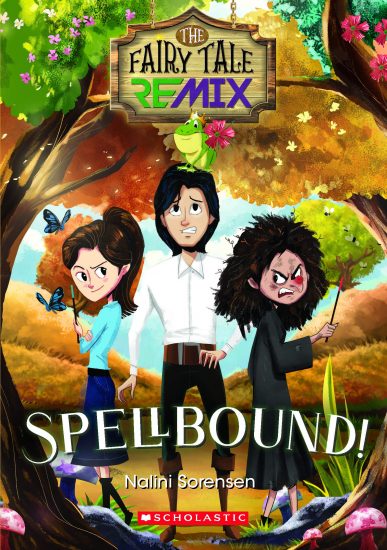
Perspective
I’ve always love working with fairytales at workshops. Whether we work with changing the setting or swapping gender roles, fairytales form the basis of many activities. At my creative writing programme, for instance, children rewrote stories by exploring new perspectives and alternative endings. Sure, the children were older, but it is never too early to look at someone else’s point of view, is it?
What if Cinderella were narrated by the stepmother? Would the story change?
What if the sleeping beauty did not want to marry the very first man she saw?
‘What if’ makes for the most imaginative activities, and I can’t wait to read Spellbound with a bunch of seven and eight-year-olds!
Imagination
When I read the book, I began to think. How would a magic store like Magitrix would look? And Helda at the store? How would she look?
Zubringer Ribbit!
Zubringer Reversita Ribbit!
What do these magic words do, and what new words can we come up with? I’m sure I will soon find out.
Oral Stories
The first step towards creative writing is storytelling, and I love working with adding one sentence at a time in a story circle. With young children, I sometimes contribute every alternate sentence so that something happens continually, instead of the story meandering aimlessly. A fairytale remix promises to be hilarious. What will happen if we bring Cinderella, Rumpelstiltskin, Rapunzel and Snow White into the same story? Together, we’ll figure it out.
Why do we reread books when there are so many others available? For several reasons, but the most important one is that if the children at my book club love a book we read, I keep it in mind and reintroduce it to a fresh batch after a couple of years. A child-approved book is the best kind to read at a book club for children!
Join a programme
Registrations are now closed for the November-December 2024 edition of my book club. New batches begin every alternate month. Join my mailing list if you would like to receive email notifications about my programmes. Alternatively, follow me on social media – Facebook and Instagram – for regular updates.

Petu Pumpkin: Freedom Fighter
September 2, 2024
We need more books this length! Petu Pumpkin: Freedom Fighter is perfect for my book club for so many reasons! For one, it’s a book about agency and creating change, while also being a humorous read featuring familiar characters. For another, since it’s just about a hundred pages long, we have enough time to read as well as do activities based on the book.
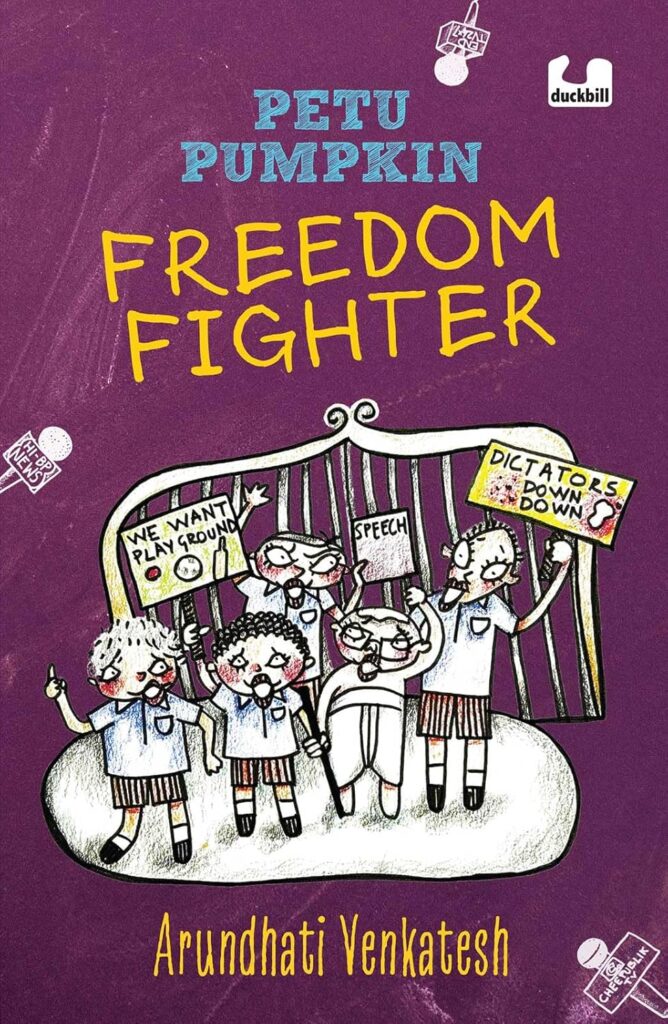
Interviews
Petu Pumpkin and his friends gather quite a crowd as they protest outside their school gates. This is a good prompt for us to explore how interviews worked. What questions would we ask an interviewee? Just like when we read Sita’s Chitwan, I look forward to interesting interviews of my book clubbers!
Campaign
What would you campaign for? What makes you angry, and what do you feel is unjust?
With Petu Pumpkin, we’ll look at a few elements of a campaign from discussing what changes we want to make to the world around us to designing a poster.
Writing a Speech
What goes into a speech? How do we structure it so that it is impactful. As we read about speeches, we’ll try to write one of our own about something we believe.
Join my book club!
Registrations are now closed for the November-December 2024 edition of my book club. New batches begin every alternate month. Join my mailing list if you would like to receive email notifications about my programmes. Alternatively, follow me on social media – Facebook and Instagram – for regular updates.

We’ve read and enjoyed four of Arundhati Venkatesh’s books at my book club! Take a look:
Susie Will Not Speak
September 1, 2024
Susie Will Not Speak by Shruthi Rao was one of the first hOle books I read, and it remains one of my favourites. Jahan and Susie leap out of the pages – sparkling characters that make the story what it is.
Susie has a lisp. How can she say even her own name without proclaiming her lisp to the world? There’s just one solution. Susie will not speak. Ever. What can her best friend Jahan do?

NOT Speaking
What if you refuse to speak? How else can you communicate?
We can use the chat box, charades, artwork, and even make up a sign language of our own. During our very first class, that’s exactly what we’ll do!
Poems
Bullies make up mean rhymes about Susie, but those rhymes don’t even make sense. Surely, we can do better! We’ll try to make up rhymes about ourselves – and they’ll make sense too!
Tongue Twisters
A noise annoys an oyster.
She sells seashells on the seashore.
Susie may not agree, but playing with tongue twisters is fun! How many other tongue twisters do we know? And how fast can we say them?
The earlier children develop the habit of reading, the more likely they are to continue to be readers. And a book club is a great way to foster a love for books!
Join my book club!
Registrations are now closed for the November-December 2024 edition of my book club. New batches begin every alternate month. Join my mailing list if you would like to receive email notifications about my programmes. Alternatively, follow me on social media – Facebook and Instagram – for regular updates.

Mini’s Books
July 7, 2024
Books about books are always a joy to read at my book club! We’re reading In the Woof of Time at my reading programme for ages nine and ten and Mini’s Books at the one for ages seven and eight.
Anyone who grew up on Enid Blyton wanted to eat scones, crumpets and treacle. I was one of them, and so, this book is all the more believable. Mini wants to eat the food the Big Little Monsters in the books she reads eat. And through her summer holidays, she slowly learns more and more about these monsters–and discovers all the surprising consequences of reading books! Thanks to her stories, she makes a friend, becomes a detective, learns to entertain herself and even starts to cook!
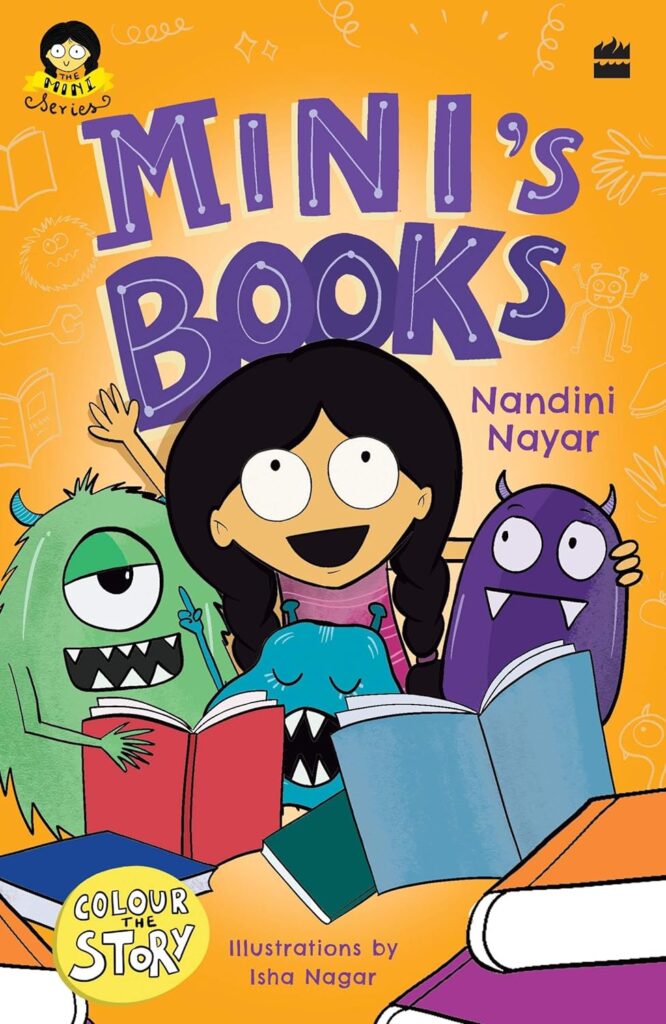
Monster Stories
I love monster stories! The wonderful thing about monsters is that they can take any form whatsoever. They can be tiny or huge, friendly or ferocious. Together, we’ll create a monster of our own!
Recipes
What are Tooth Crunchers, Bone Crackers and Round-Rounds? Let’s use our imagination and write recipes for each of these. Will we find them as much fun as the Big Little Monsters in Mini’s Books?
Colour the Story
Just like when we read Lucky, It’s Summer!, we’ll spend some time colouring the pictures in the story. Colouring monsters will be particularly enjoyable!
Join my book club!
Registrations are now closed for the August-September 2024 edition of my book club. New batches begin every alternate month. Join my mailing list if you would like to receive email notifications about my programmes. Alternatively, follow me on social media – Facebook and Instagram – for regular updates.

In the Woof of Time
July 6, 2024
A book club mystery – of course I had to explore the possibility of introducing it to my book club!
Samar and his friends find themselves in the middle of a spate of thefts – a dog, milk bottles, and even jewellery. They love reading mystery stories, so this they must investigate the mystery that surrounds them! Will they do it in the woof of time?
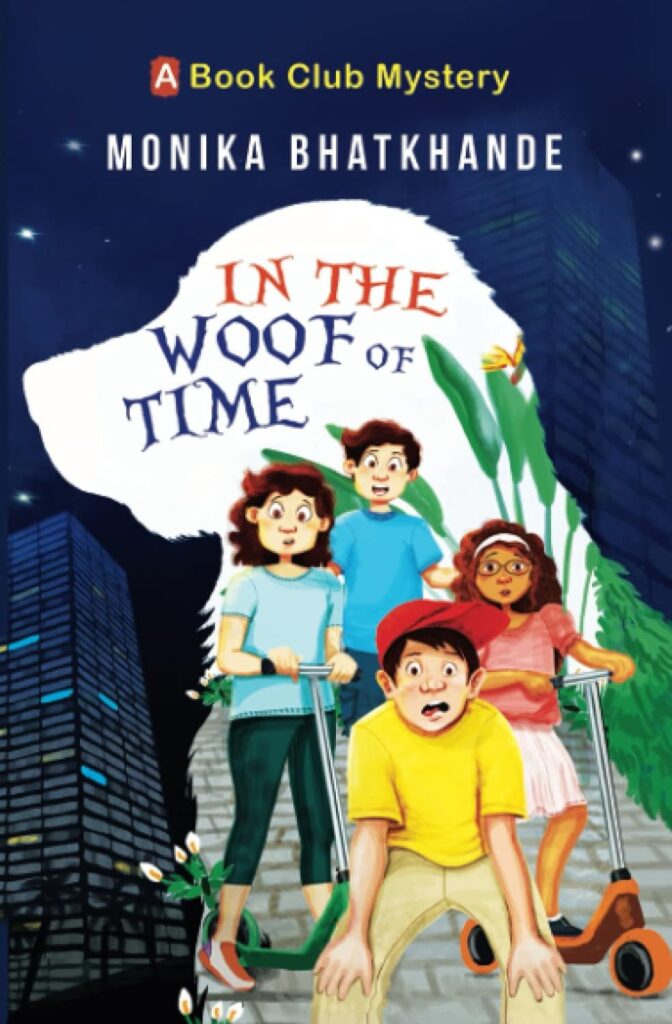
Clues and Puzzles
As we read In the Woof of Time, we’ll engage in a little code-making and code-breaking of our own. Detective stories and cryptograms go together!
Alibis and Red Herrings
A lot of words and phrases are associated with detective stories alone. As we read In the Woof of Time, we’ll do a vocabulary quiz, testing how many of these words are familiar to us.
Creating a Detective
Sherlock Holmes, Hercule Poirot, Miss Marple, the Five Find-Outers and Dog … So often, iconic detectives propel mystery stories. Together, we will attempt to create a group of detectives. What would this group call itself? What are the characters’ strengths and weaknesses? Is there one character who is smarter or more courageous than the rest?
Join a book club!
The August 2024 edition of Read, Write, Explore is sold out!
New batches begin every alternate month. Join my mailing list if you would like to receive email notifications about my programmes. Alternatively, follow me on social media – Facebook and Instagram – for regular updates.

The Perfect Present
July 5, 2024
We’ve read two books from the Ready, Freddy series at my book club, and I’m happy to read another! While I cannot say I love the books, I see how well they suit a book club. They are easy to read, full of illustrations, and great conversation starters.
The Perfect Present is a Christmas story. Freddy is making a list of everything he wants for Christmas. His list is endless, but predictably, the story leads us towards an understanding of the spirit of Christmas.
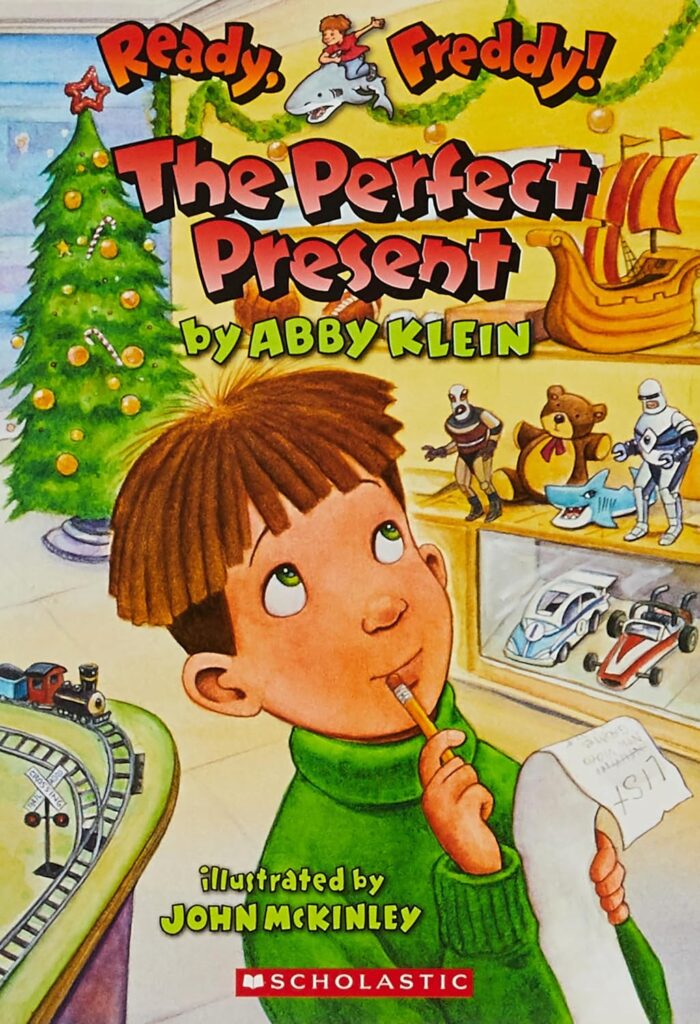
Book Activities
The Ready, Freddy series is full of readymade activities – finding the hidden fin in each picture, a word puzzle, and a craft activity too!
Festivals
I remember a book club session some time ago when a child told us all about Onam! A book about Christmas will be the prompt for the children to talk about their favourite festivals–which ones they celebrate, which ones are special and what makes them special.
Lists
Freddy and Suzie make lists of things they want for Christmas, but we’ll make other lists. What are our favourite toys? Favourite people? What about the five most boring things in the world? I’m sure we’ll have fun!
Join my book club!
Registrations are now closed for the August-September 2024 edition of my book club. New batches begin every alternate month. Join my mailing list if you would like to receive email notifications about my programmes. Alternatively, follow me on social media – Facebook and Instagram – for regular updates.

The Worst Witch to the Rescue
July 4, 2024
I used to read The Worst Witch as a child! I had no idea whether I would still enjoy reading about the hapless Mildred Hubble, though. I picked up The Worst Witch to the Rescue without having decided whether to introduce it to my book club–and I loved it all over again! It’s funny, sweet and full of action; I’m sure my book clubbers will enjoy the book too.

Quizzes and Vocabulary Games
Most children love fantasy. I look forward to doing a few magical games with them – a word search puzzle on words related to magic, a quiz about famous magical places, and perhaps an activity on creating a witch together too!
The Rule of Three
It’s never too early to get children to start looking at how books are structured. The rule of three, for instance, is a fascinating one. How many characters come together at the centre of the story? What other interesting threes can we find as we read?
Magical Adventures
Spells going wrong make for funny, exciting stories, so this will be our prompt for the creative writing component for The Worst Witch to the Rescue. What spell would you like to create? If it goes wrong, what will happen? And how will your protagonist deal with the consequences?
Join a book club!
The August 2024 edition of Read, Write, Explore is sold out!
New batches begin every alternate month. Join my mailing list if you would like to receive email notifications about my programmes. Alternatively, follow me on social media – Facebook and Instagram – for regular updates.

Sita’s Chitwan
July 3, 2024
Last year, I invited Vaishali Shroff to conduct a workshop for my writing programme on nonfiction. It was aptly called ‘Non-Boring Nonfiction‘. I rarely read nonfiction, and I don’t think I’ve ever read nonfiction with my book club. I find it easier to introduce nonfiction elements through books like A Cello on the Wall and A Giant Leap.
Once more, that is what I will be doing with Sita’s Chitwan. Half the book is a story, the story of eight-year-old Sita, who lives on the outskirts of Chitwan National Park. The other half of the book lets us explore Chitwan National Park, introducing us to its vegetation, people, animals and birds. I’m waiting to read this book with my book clubbers next month!
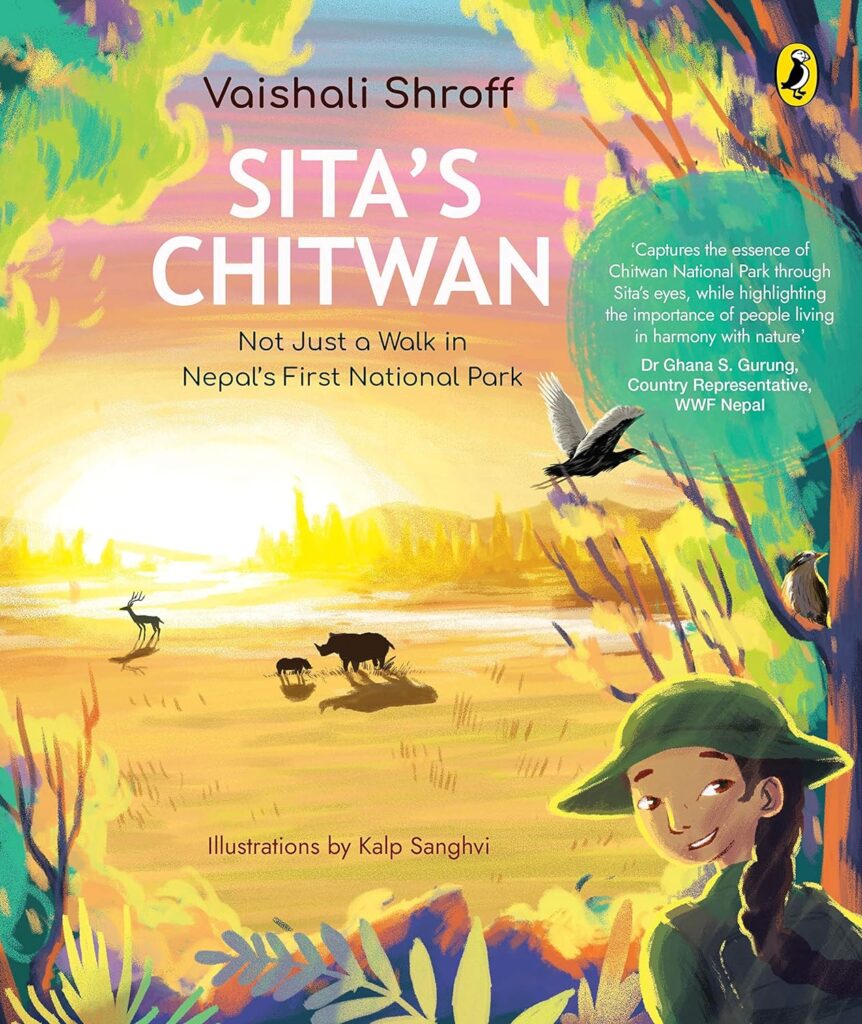
Paw Prints
Often, when we visit the jungle, guides tell us that the job of a guide is much like the job of a detective. Following tracks, looking for clues … it’s exciting! In class, we’ll do a little activity matching animals with their paw prints. Let’s see how many we can identify!
Sense Poems
Can we link our emotions to our five senses? This is an activity I’ve done before, like when we read The Vampire Boy, for instance. A book that is set in the great outdoors is perfect for exploring our senses. We’ll watch a quick video of the jungle and then explore what emotions we feel. We’ll then take the next step and link these emotions to our senses.
Interviews
Towards the end of Sita’s Chitwan is an interview of Doma Paudel, the first female nature guide in Chitwan. This will lead us to interviews of our own. I will give my book clubbers five questions that I want them to ask someone in their family. They’ll record their interviews and share them in class!
Join my book club!
Registrations are now closed for the August-September 2024 edition of my book club. New batches begin every alternate month. Join my mailing list if you would like to receive email notifications about my programmes. Alternatively, follow me on social media – Facebook and Instagram – for regular updates.

Flyaway Boy
July 2, 2024
We’re going to read Flyaway Boy again at my book club! We’ve read and enjoyed When the World Went Dark by Jane de Suza twice, and I look forward to reading this one with another batch too. It’s perfect to discuss so many things – form, narrative voice, imagination, possibility … The list of ideas below just about scratches the surface of everything we can do with the book!
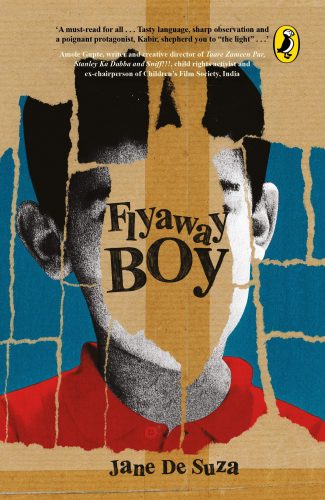
Boxes
Flyaway Boy opens with a bit about boxes. What neat little boxes do we fit into? Are there any labels we give ourselves, or any labels people give us? Especially as many of the children join my book club batch after batch, I’d love to know if there are any labels they give one another. What labels do they associate with the others at the book club?
It’s an interesting introspective activity to undertake even without the context of the book because sometimes, we create labels for ourselves and try to live up to them, even if we’ve actually outgrown the boxes to which those labels belong.
What do you make up?
Continuing with the idea of introspection, I would love for the children to write a little about what they make up. We make up stories all the time. Stories about being rich and famous. Stories about being top players, top students, anything. This is likely to be something private, and I won’t push the children to share what they’ve written, but journalling our ideas is always an eye-opener.
Collective Nouns
What collective nouns do we know? Nana Know-It-All makes up a poem featuring a murder of crows, a gulp of swallows, a kettle of hawks and a shrewdness of apes. Together, we’ll do a fun, funny activity that introduces odd collective nouns.
Join a book club!
The August 2024 edition of Read, Write, Explore is sold out!
New batches begin every alternate month. Join my mailing list if you would like to receive email notifications about my programmes. Alternatively, follow me on social media – Facebook and Instagram – for regular updates.


